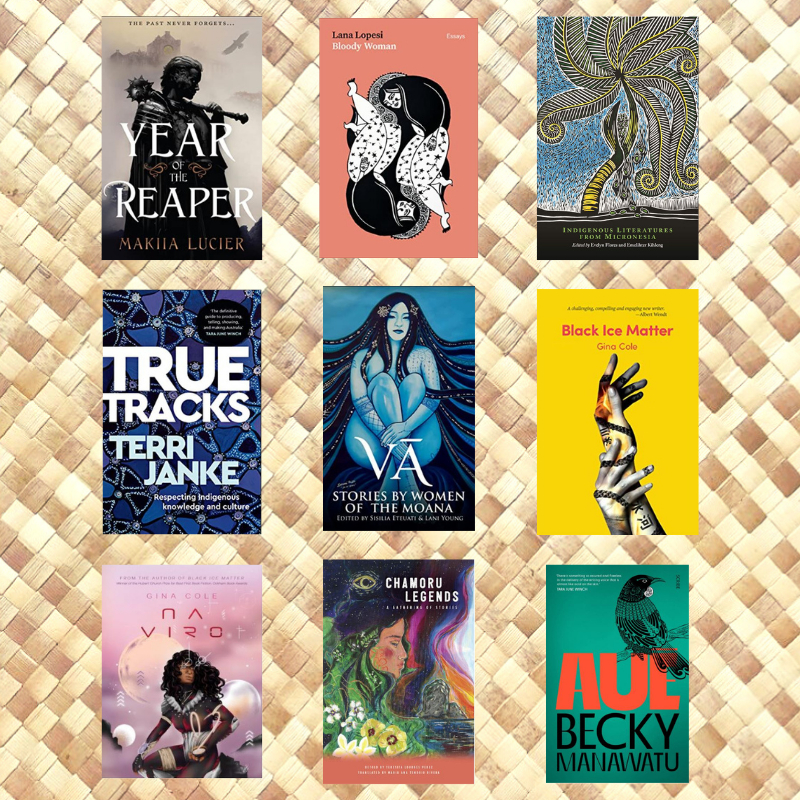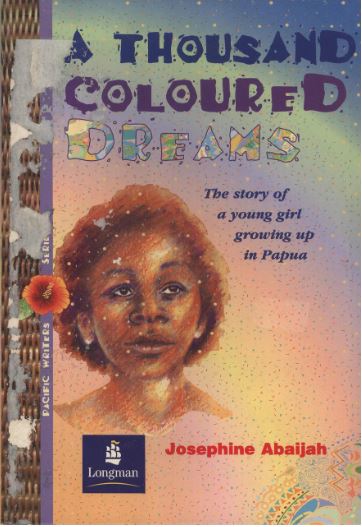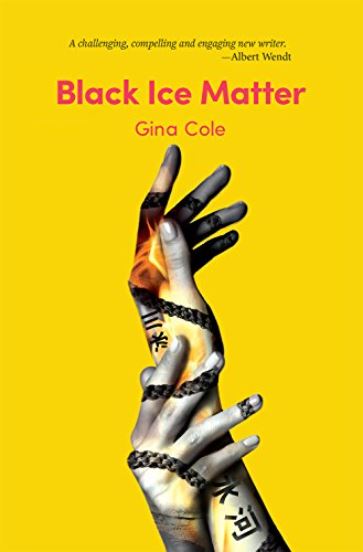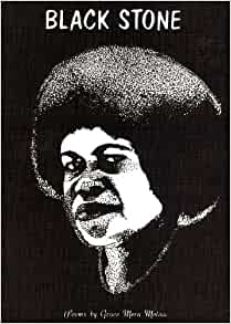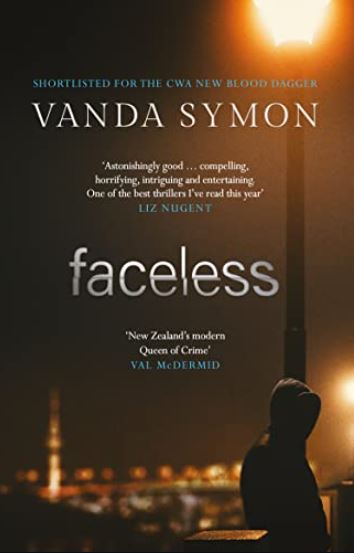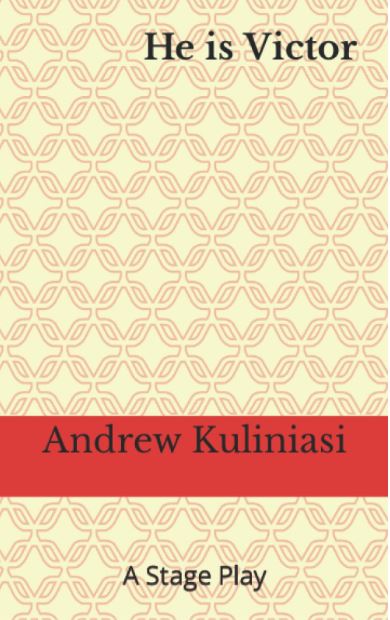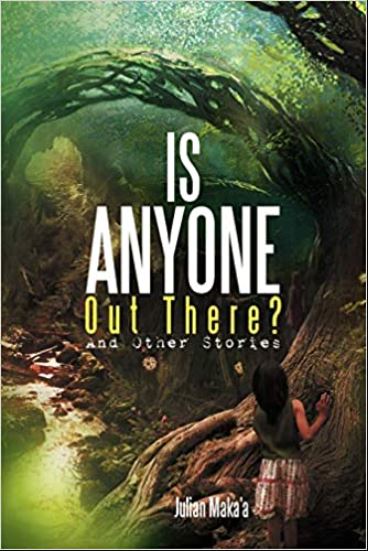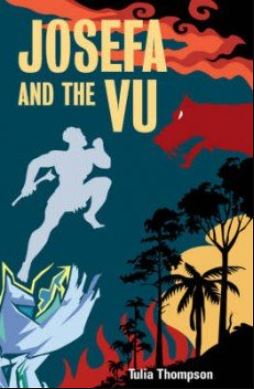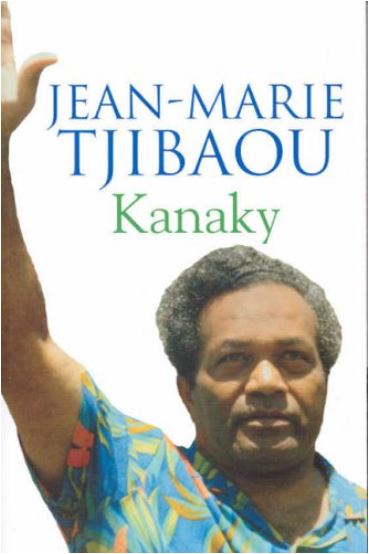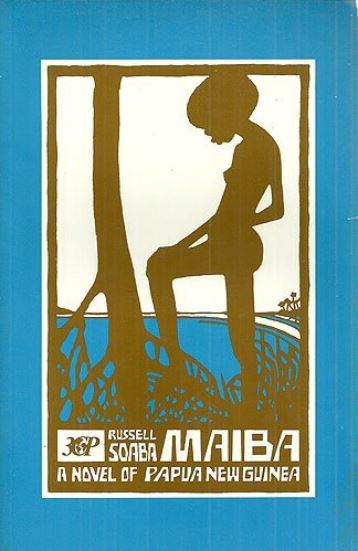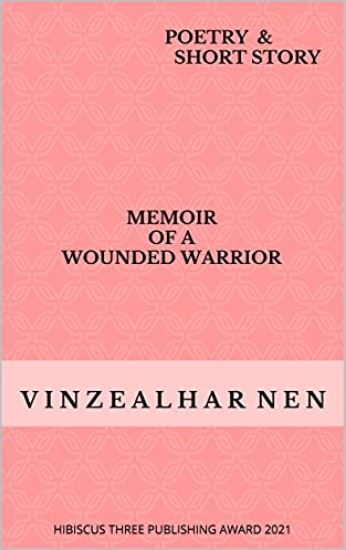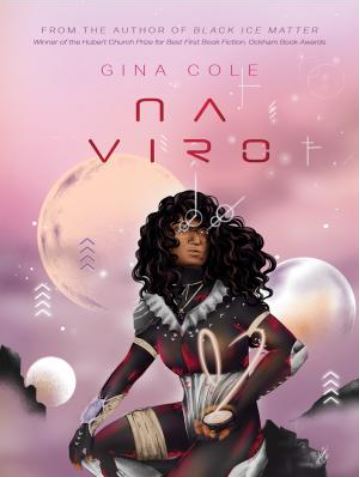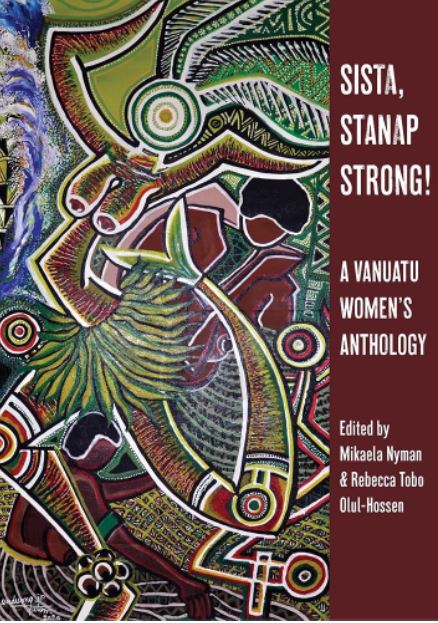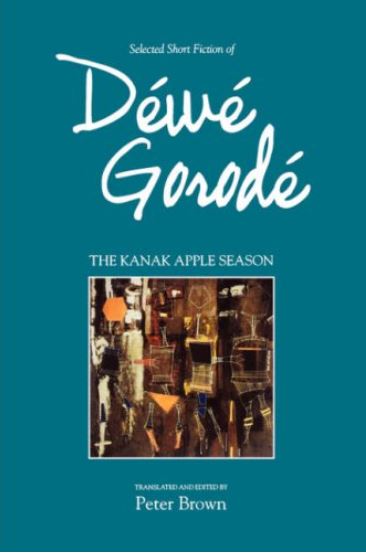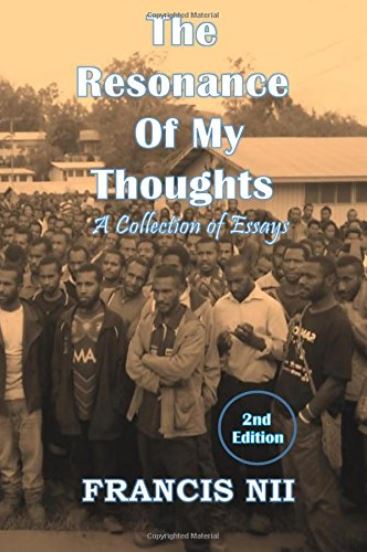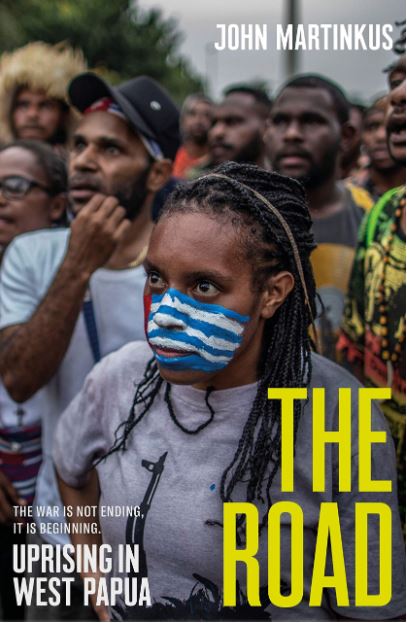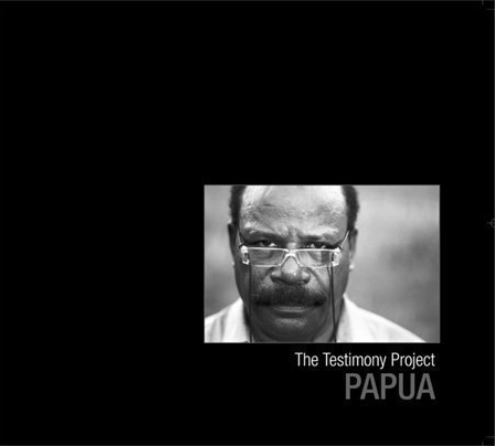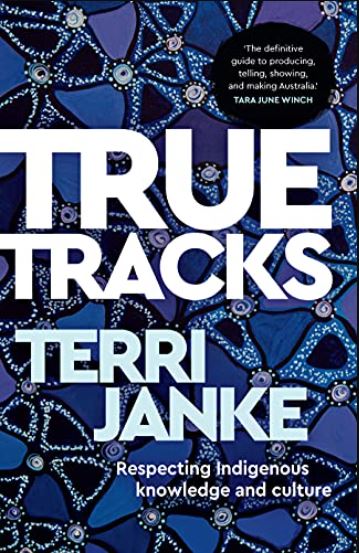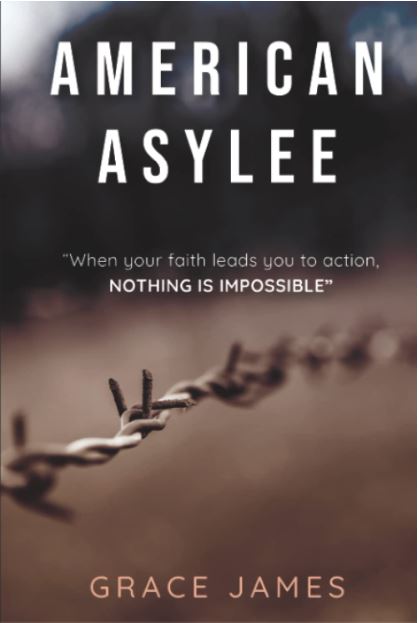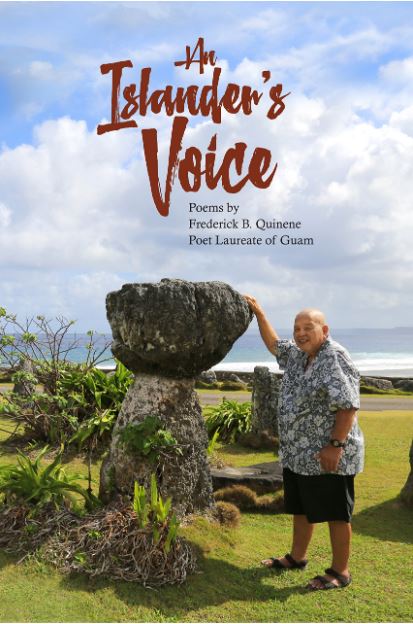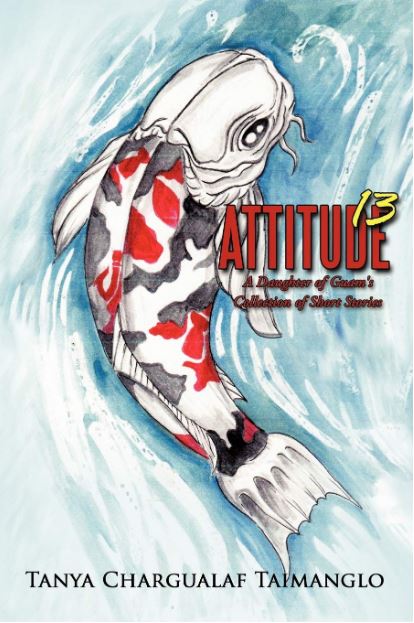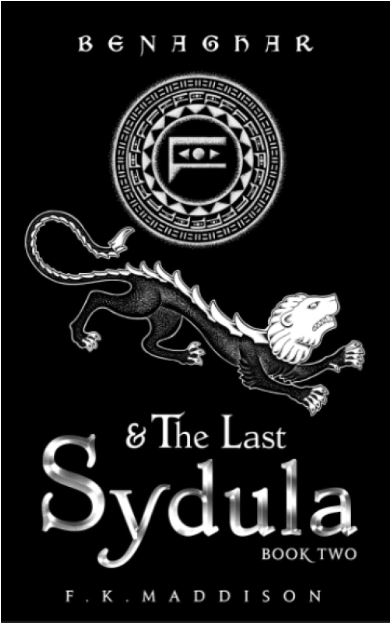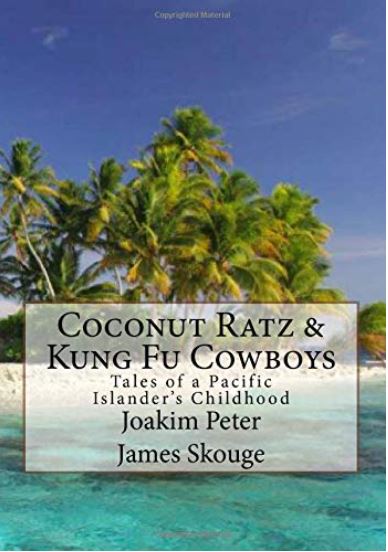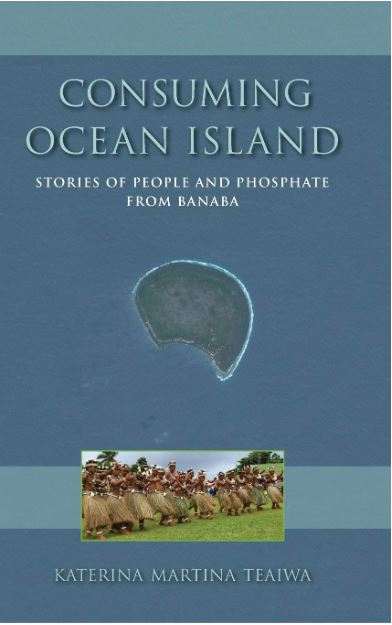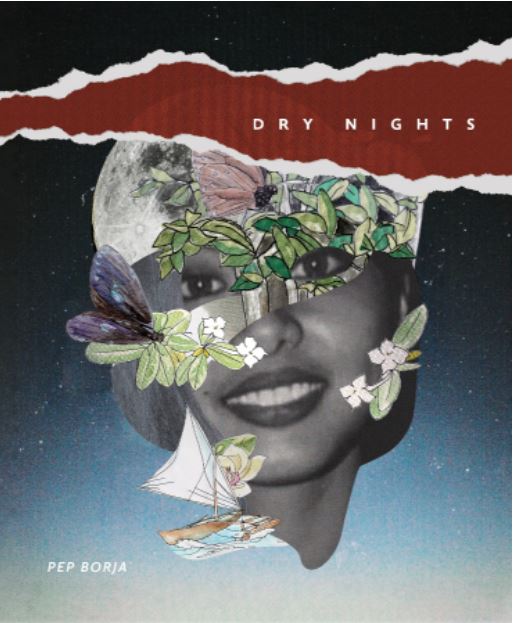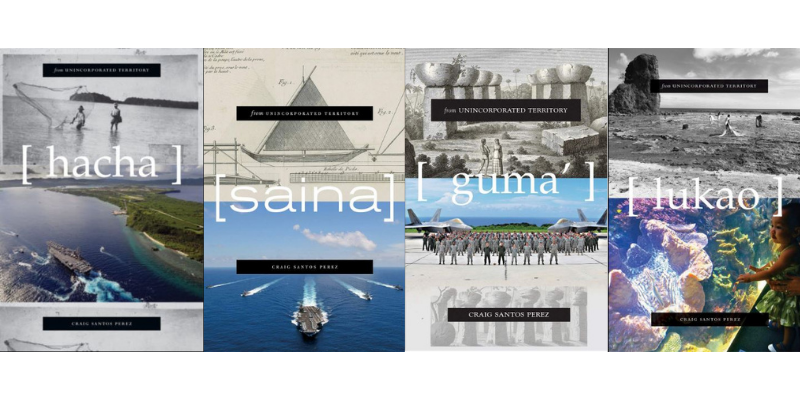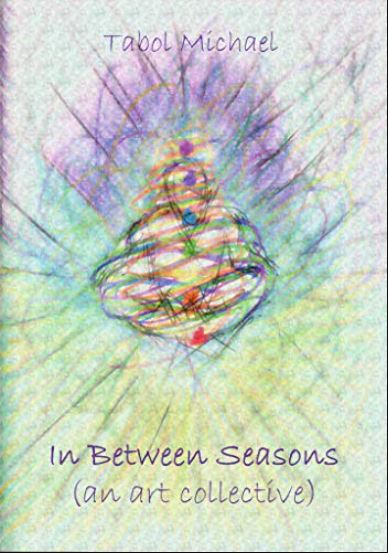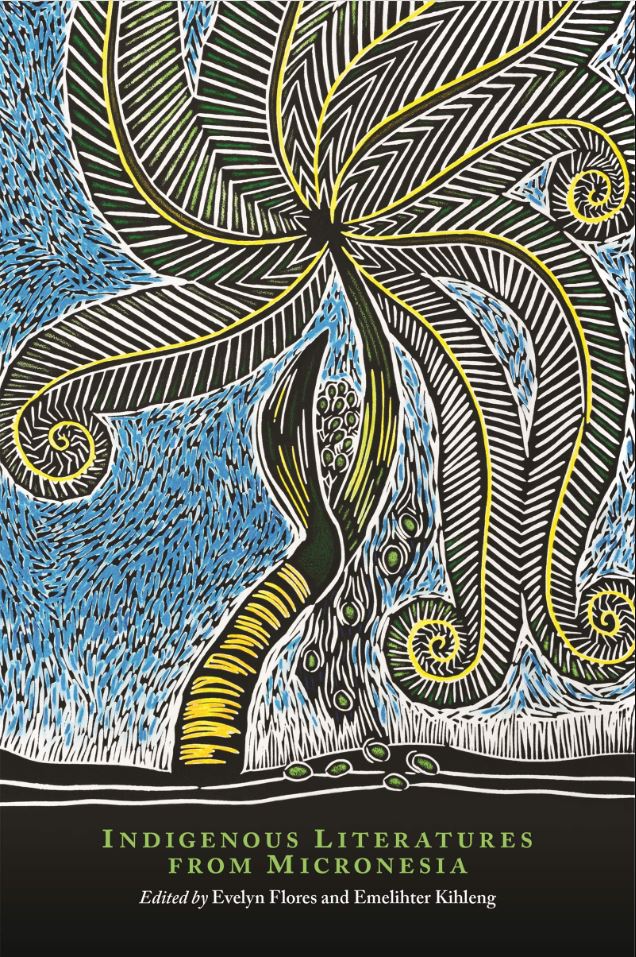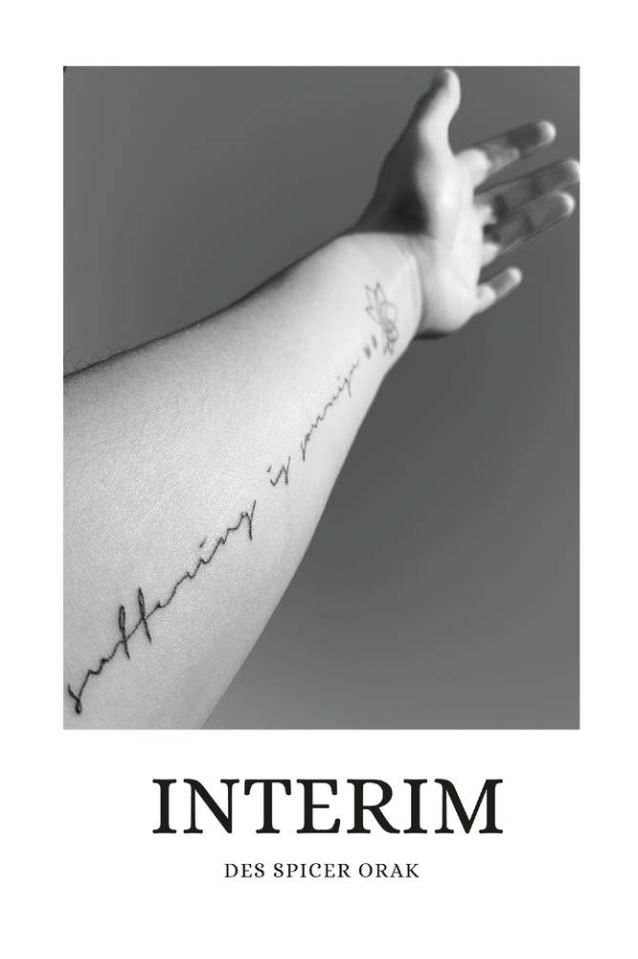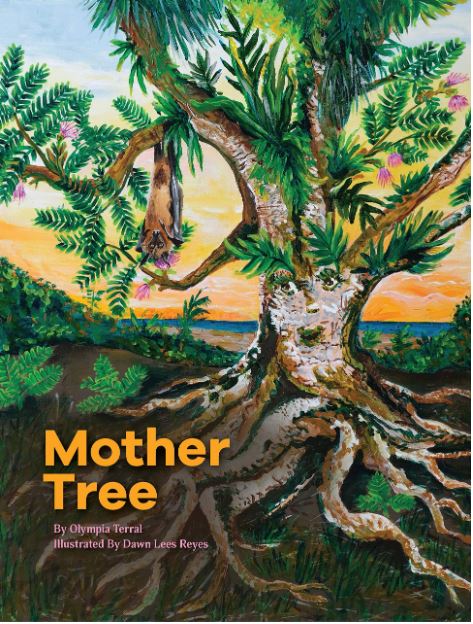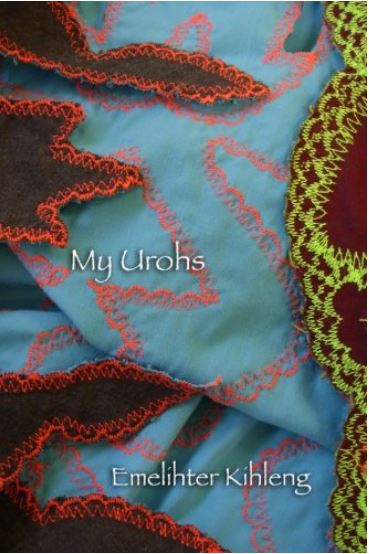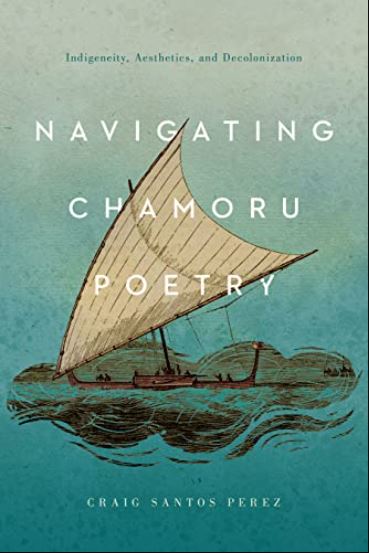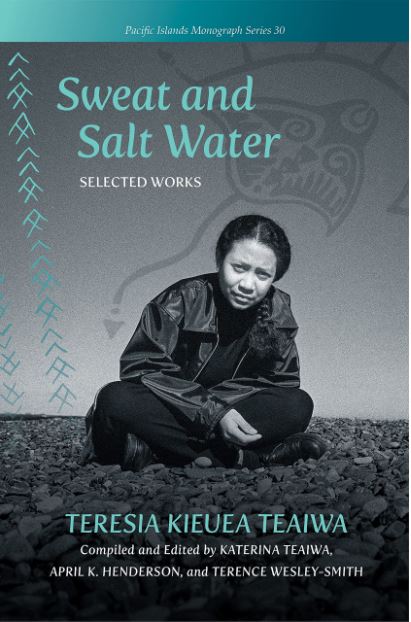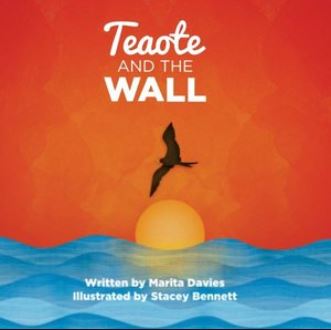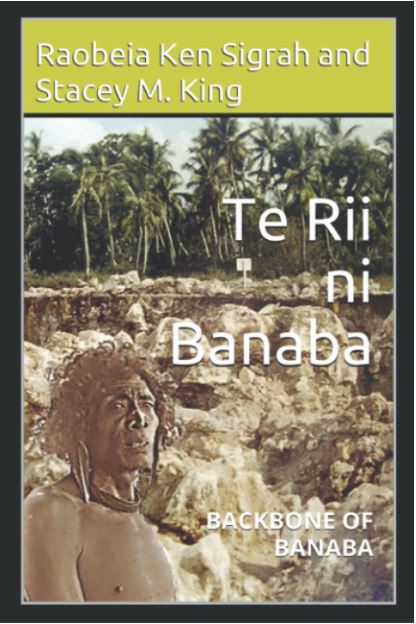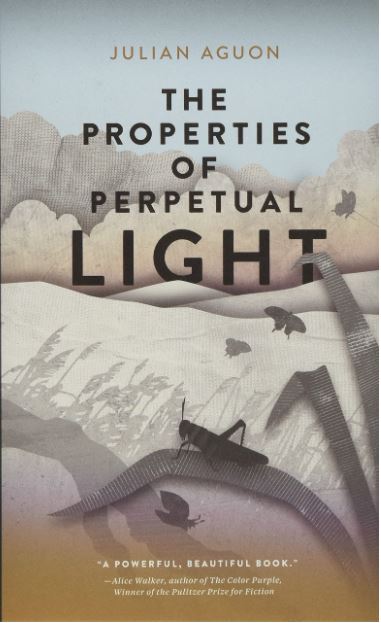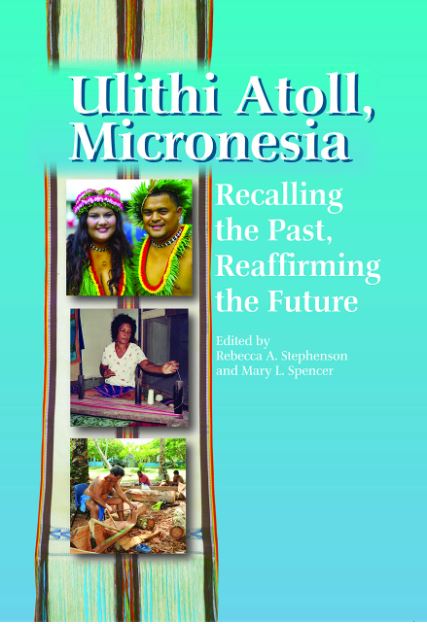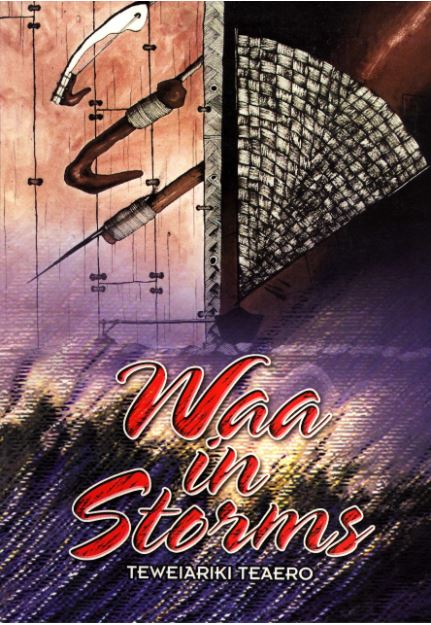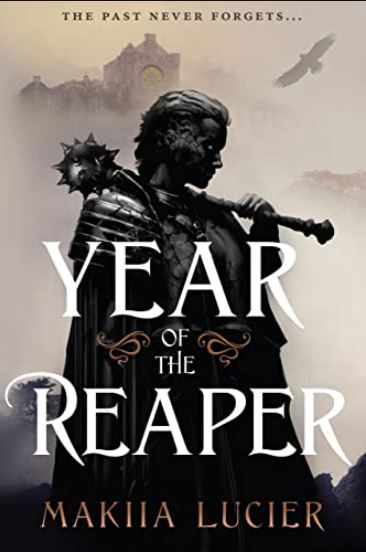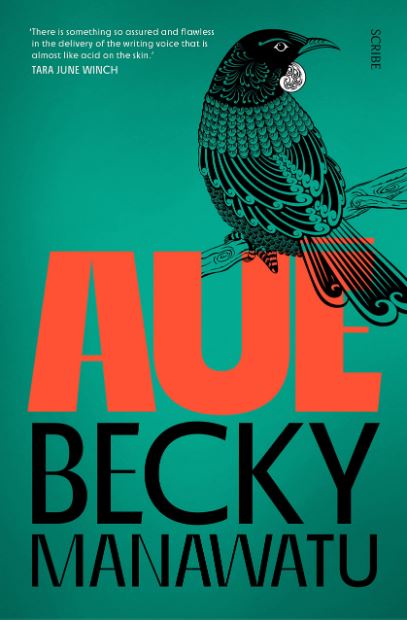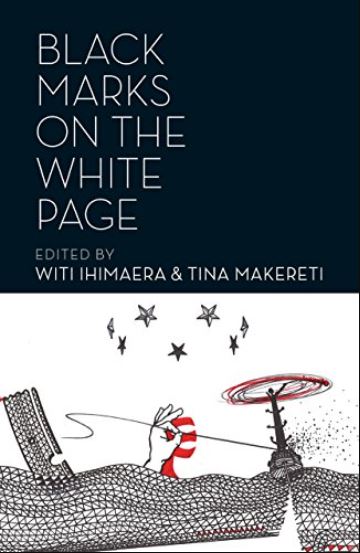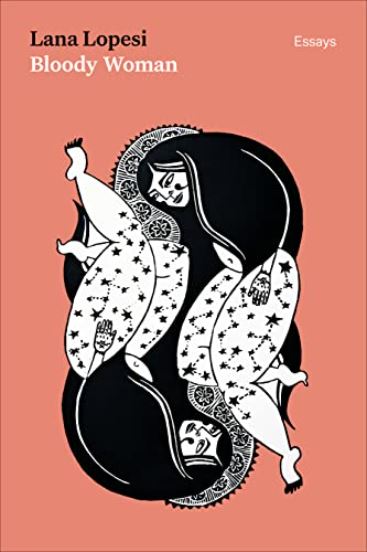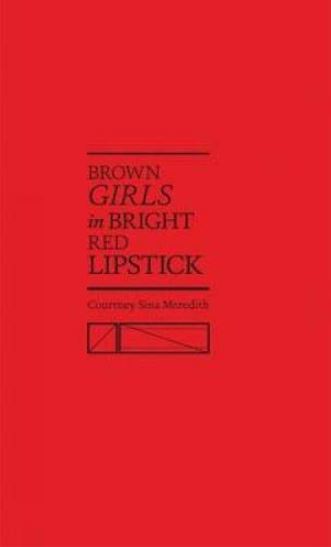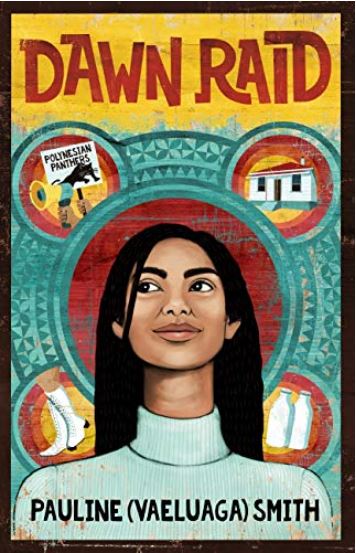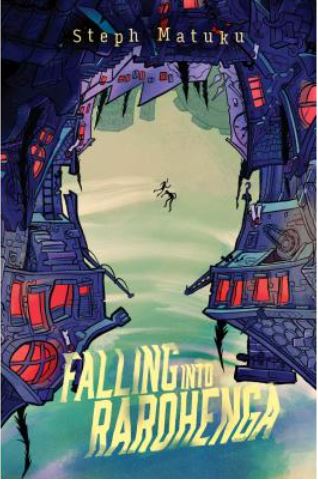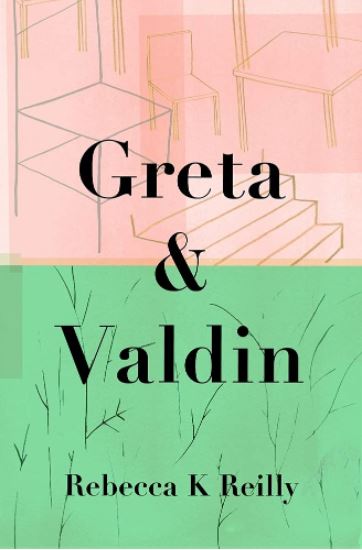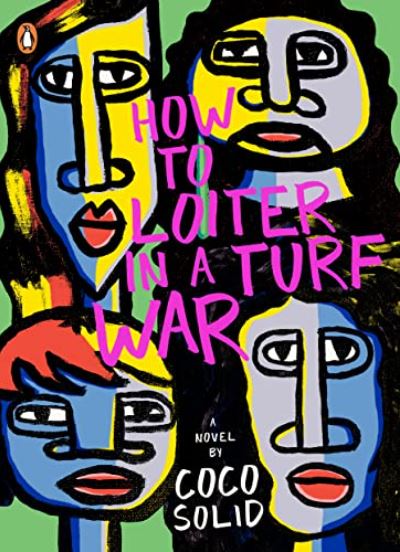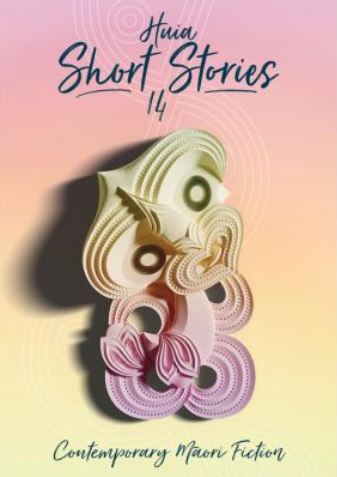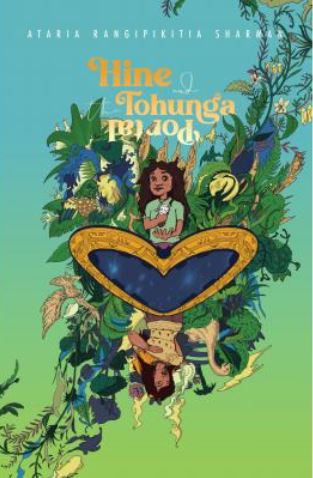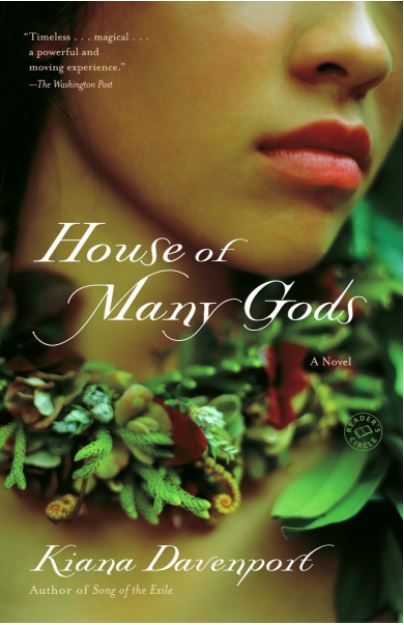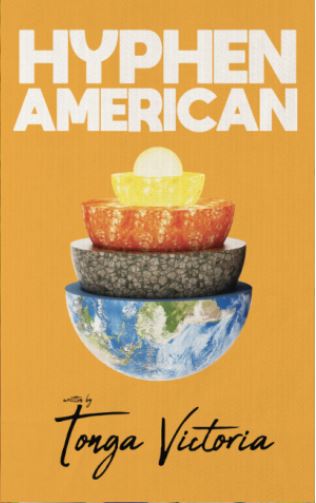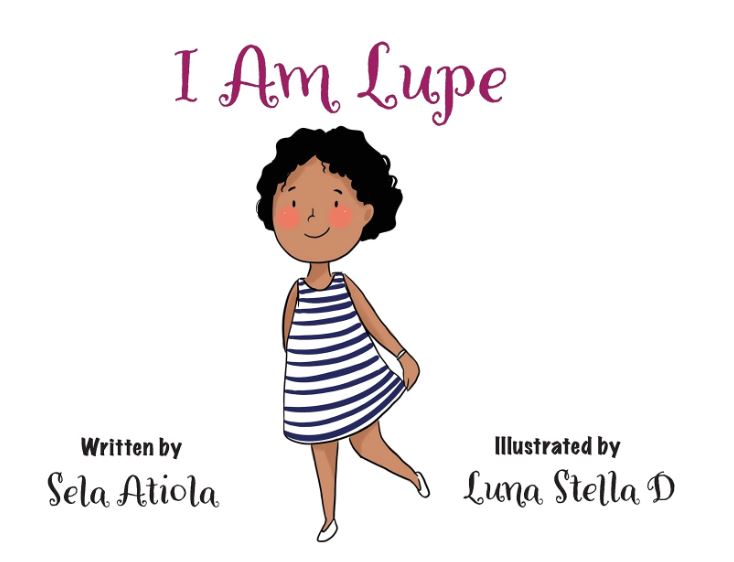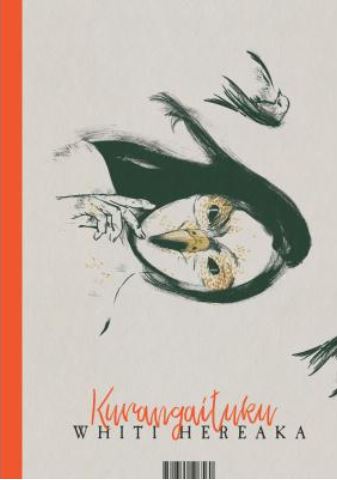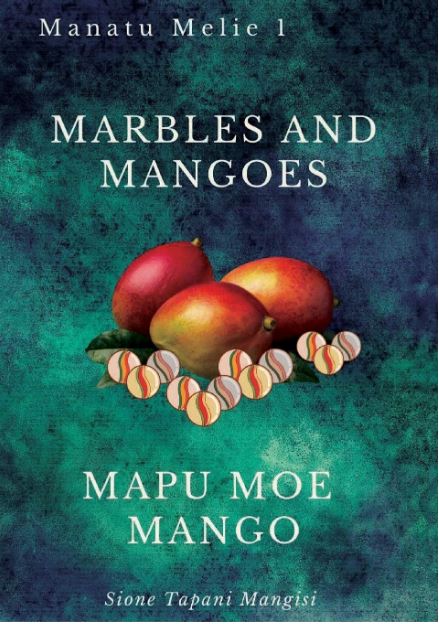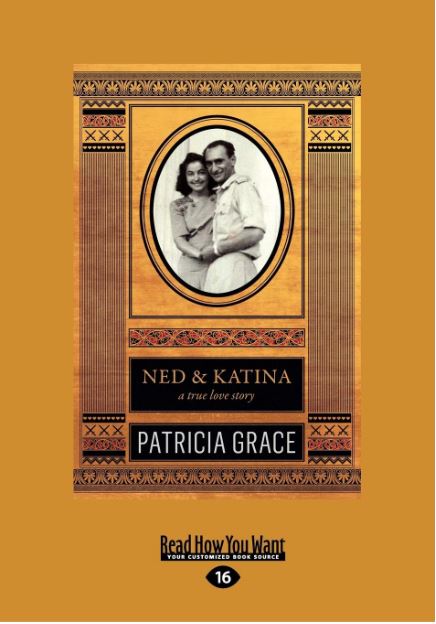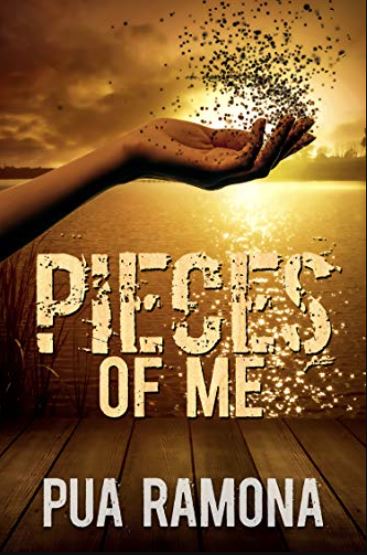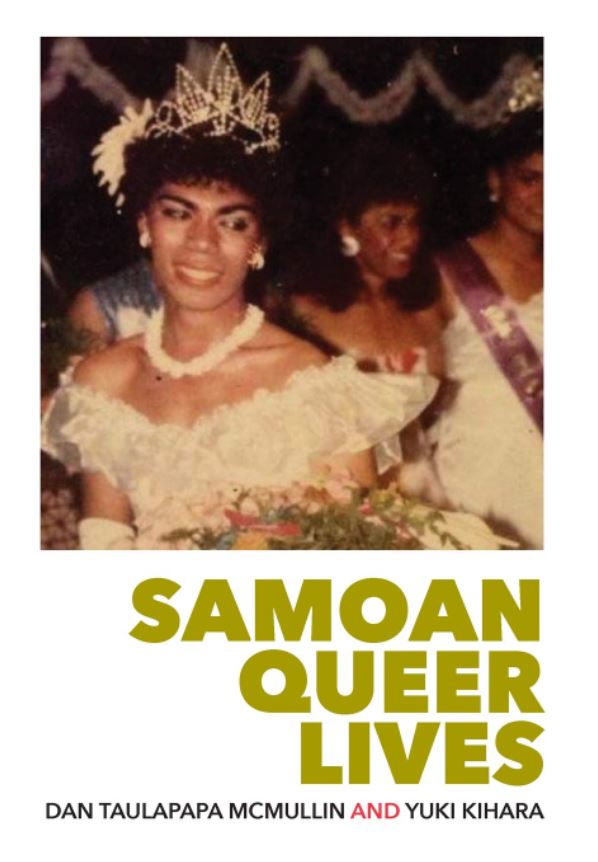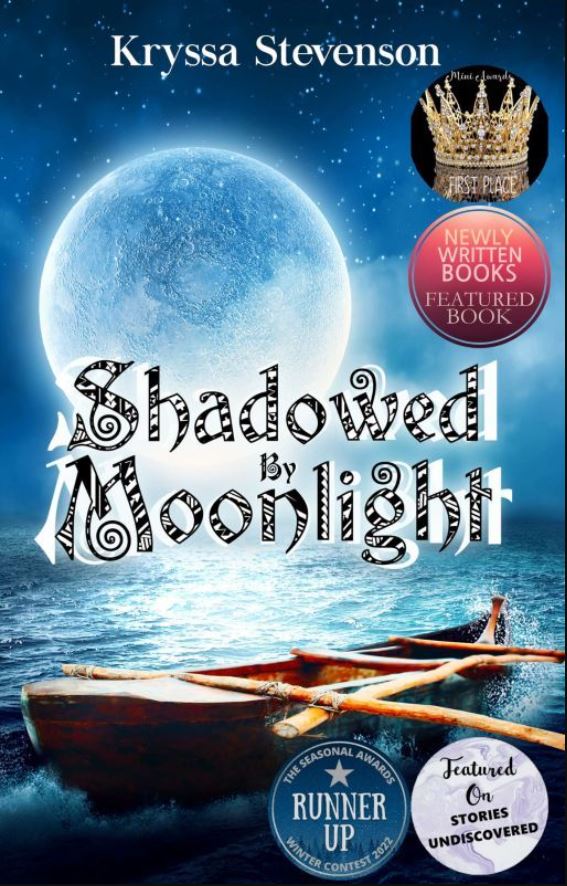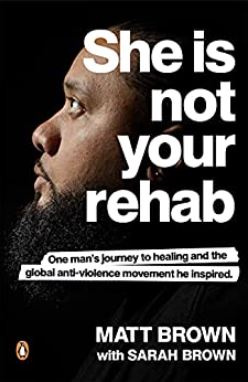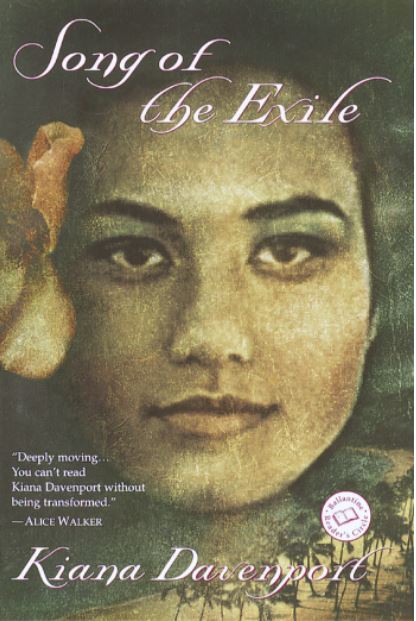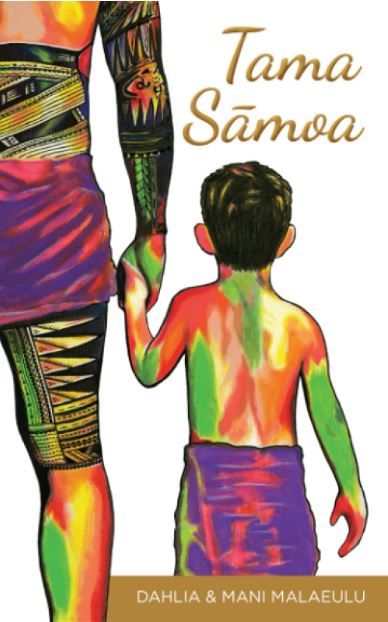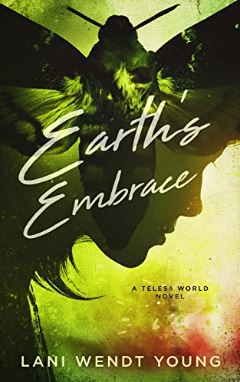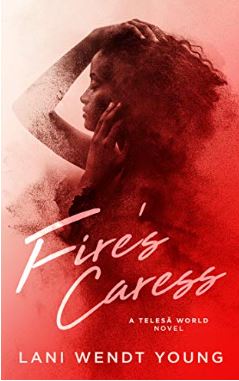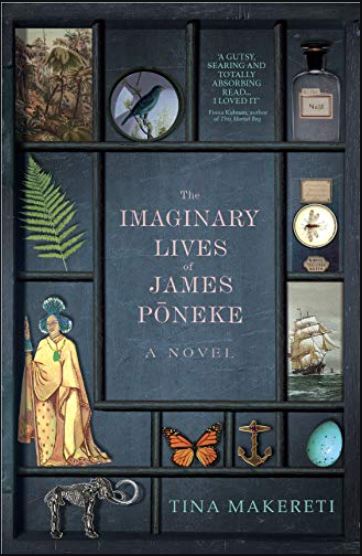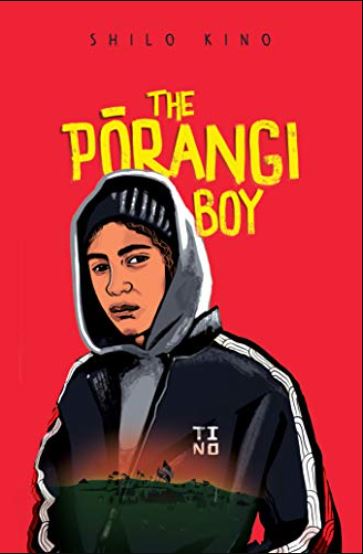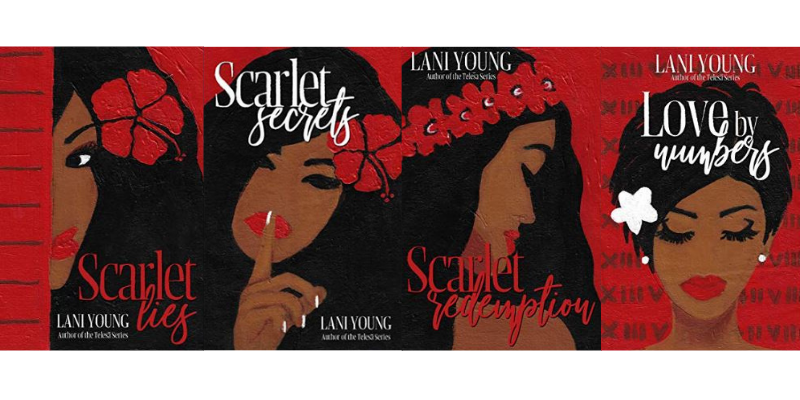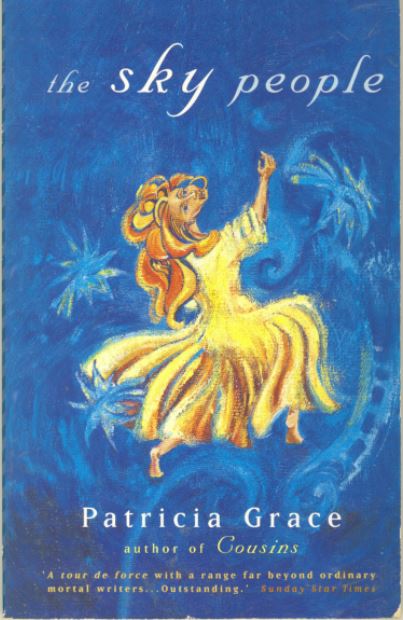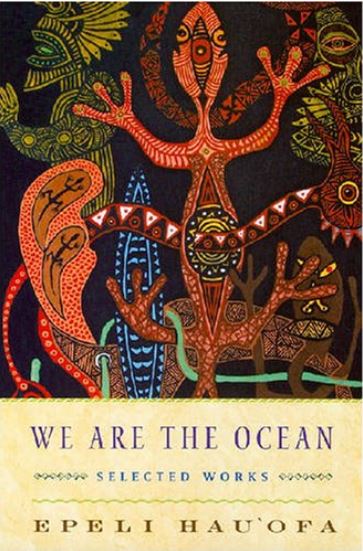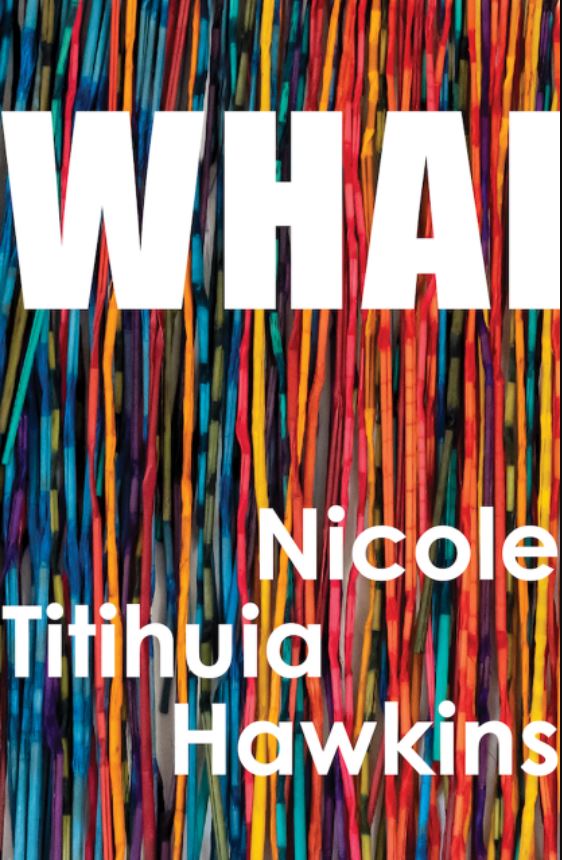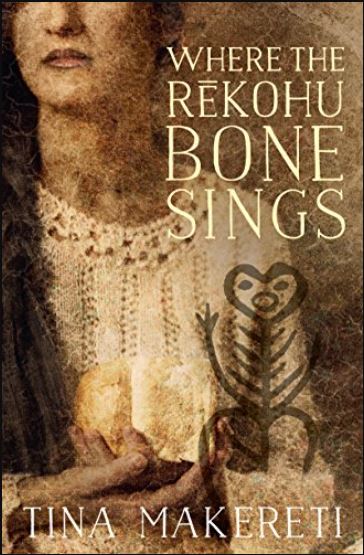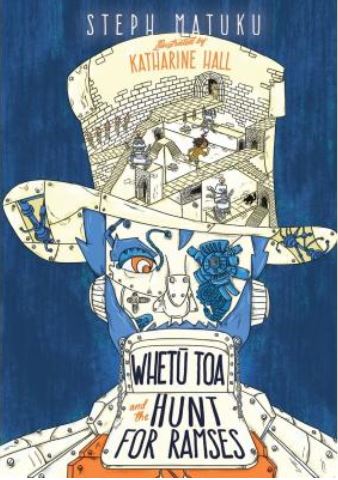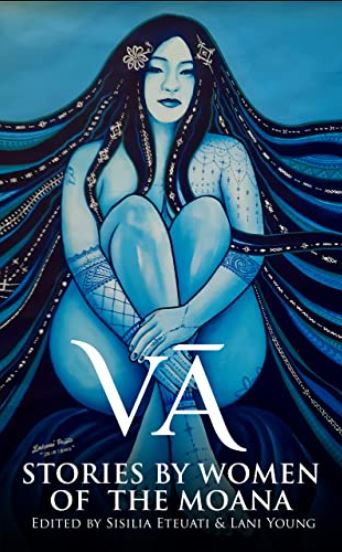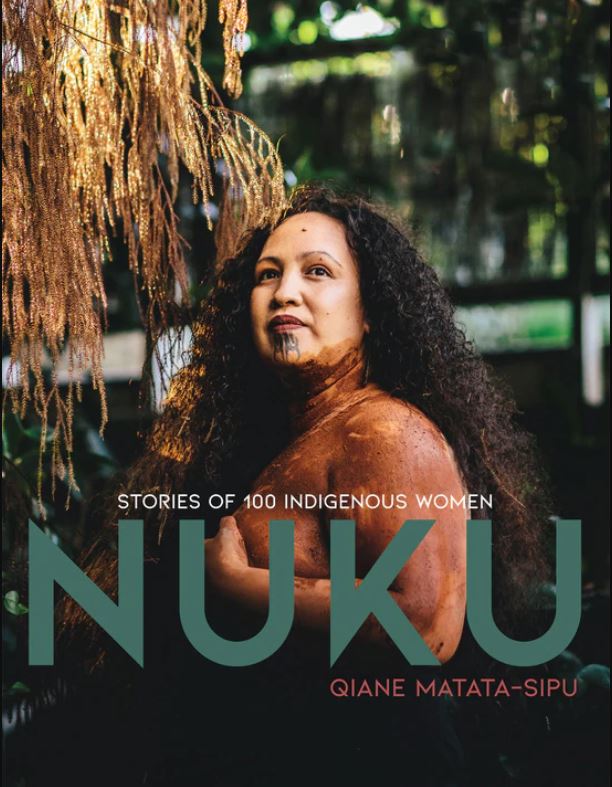This post may contain affiliate links, which means I’ll receive a commission if you purchase through my links and images, at no extra cost to you. Please read the full disclosure here.
Celebrating AAPI Month with Books by Authors from The Pacific Islands of Melanesia, Micronesia and Polynesia.
In America, the month of May marks the celebration of all things Asian and Pacific Islander to which some might argue that lumping two very different continents together – the whole of Asia and the large expanse of Oceania – is somewhat bizarre. However, the indigenous people of Asia and the Pacific Islands have long been involved in shaping the country of America, and so May was chosen as the month to commemorate this long and rich heritage with the celebration of the first immigration of the Japanese to the United States in May 1843, along with the completion, in 1869, of the transcontinental railroad – the majority of which was built by Chinese Immigrants.
As someone with both Asian and Pacific Island Heritage (Chinese and I-Kiribati) the month of May is a great opportunity for me to indulge in these two sides of my heritage. However, API month has come to be dominated by Asian culture – you only have to look at Goodreads recommendations for AAPI month to see the glaring disparity – with little recognition for Pacific Islanders.
And as a consumer of books, you and I both can also be blinded by what the large publishing houses and bookstores put in front of us – majority-white publications with similar book covers, or their marketing machines going overdrive to publish the latest trending books, or rehashing the classics without making room for new authors and more diversity.
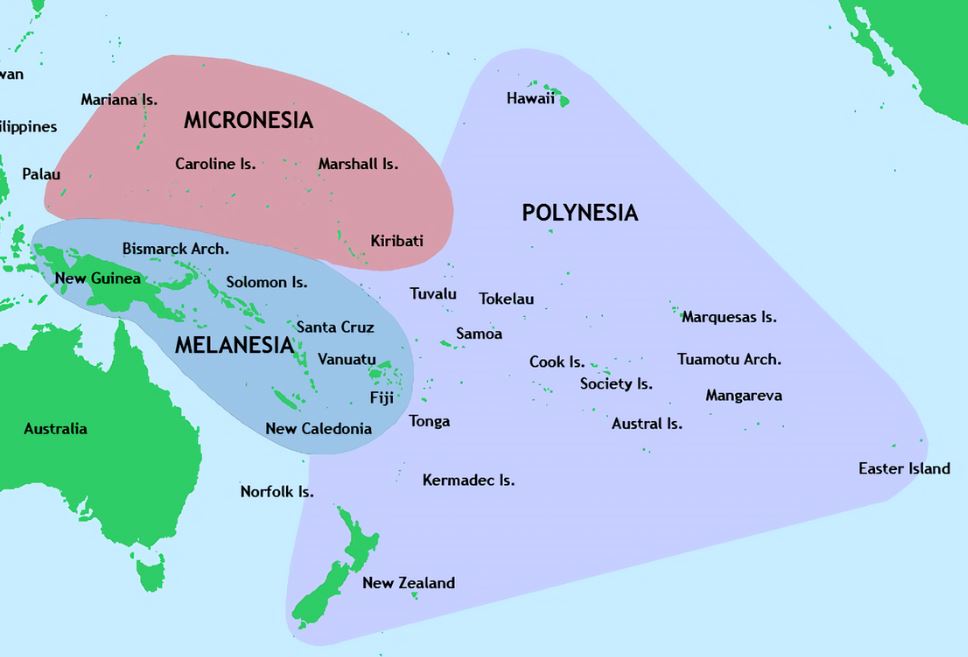
And without the marketing machine of large publishing houses, or not fitting their ‘trending’ lists, it’s harder for the authors, writers and poets of Oceania to be given the recognition they deserve. So for API Month, I am only going to celebrate and highlight works by indigenous Pacific Islanders.
For those of you who are not familiar with the region, I will also provide a little history and geography lesson. In total, there are 15 independent Pacific Island nations including the addition of tens of thousands of islands, islets, and atolls which span over 300,000 square miles (800,000 square kilometres) and millions of square miles of the Pacific Ocean. For most non-pacific islanders, when you tell them you are of Pasifika heritage they automatically assume you are Polynesian – wrong! Pacific Islanders are Melanesian, Micronesian and Polynesian, depending on ethnicity and the islands we come from.
Each Pasifika region has produced and is continuing to produce, a plethora of talent in the literary world. Generally, works are rooted in Pasifika traditional culture, reflecting the continued importance of the spiritual and indigenous belief systems, their creation stories and the oral history of storytelling. More recently, these belief systems can be found in contemporary fiction, SCI-Fi, Fantasy and poetry. So without further ado, here are some writers, authors and poets of Pacific Island heritage you should start reading, along with some history about each region.
Melanesia Books
Melanesia is located northeast of Australia and comprises of Fiji, Makulu Islands, New Caledonia, Soloman Islands, Papua New Guinea, Vanuatu and West Papua. The name Melanesia was given by colonists and is more troubling for its racist origins – derived from the Greek melas ‘black’ and nesoi ‘islands’ – it was given this derogatory name due to the inhabitants’ dark skin.
When it comes to discovering the literature from the region there is a strong narrative of the indigenous peoples taking back control. More recent literature takes the struggles of the past, which still cast a shadow over this region, with the desire to keep alive the indigenous beliefs and identities.
Although ‘technically’ they are considered Australasian, I have included Torres Strait authors here as they are of Melanesian origin with their own distinct identity, history and cultural traditions to the Aboriginal people of Australia.
1 | A Thousand Coloured Dreams by Josephine Abaijah (Papua New Guinea)
A Thousand Coloured Dreams is a love story set against the backdrop of political intrigue in a decaying colonial regime and the impending spread of Asia across the Pacific. It is the story of Josephine Abaijah the first woman elected to the parliament of her country, Papua New Guinea. A story of courage, love and beauty that endured beyond the limits of reason or the dreams of a simple girl.
2 | Black Ice Matter by Gina Cole (Fiji)
Gina Cole is of Fijian, Scottish and Welsh descent. She is a freelance writer and lives in Tāmaki Makaurau. Her collection Black Ice Matter won the Hubert Church Prize for Best First Book Fiction at the 2017 Ockham Book Awards. Her work has been widely anthologized and published in literary journals. She was the inaugural Pasifika curator at the Auckland Writers Festival in 2021. She is a qualified lawyer. She holds a PhD in creative writing from Massey University and is an Honorary Fellow in Writing at the University of Iowa. Her second book Na Viro is a science fiction fantasy novel and a work of Pasifikafuturism.
This collection of short stories explores connections between extremes of heat and cold. Sometimes this is spatial or geographical; sometimes it is metaphorical. Sometimes it involves juxtapositions of time; sometimes heat appears where only ice is expected.
In the Black Ice Matter stories, a woman is caught between traditional Fijian ways and the brutality of the military dictatorship; a glaciology researcher falls into a crevasse and confronts the unexpected; two women lose children in freak shooting accidents; a young child in a Barbie Doll sweatshop dreams of a different life; secondary school girls struggle with secrets about an addicted janitor, and two women take a deathly trip through a glacier melt stream. These are some of the unpredictable stories in this collection that follow themes of ice and glaciers in the heat of the South Pacific and take us into unusual lives and explorations.
3 | Black Stone by Grace Mera Molisa (Vanuatu)
Grace Mera Molisa is considered one of the major authors in Vanuatu. She has played an important political role in the women’s movement for emancipation and independence. She is also considered one of the most revered intellectuals of her time.
She was born in 1946 in Ambae island, Vanuatu and died in January 2002 in Port Vila. In 1977 she was the first ni-Vanuatu to obtain a Bachelor of Arts at the University of the South Pacific.
She has written a number of poems regarding women’s issues and other social and political issues to which she is well known for. You can read some of her work in Black Stone.
4 | Butterfly Song by Terri Janke (Torres Strait)
Tarena Shaw has just finished her law degree but isn’t sure she wants to be a lawyer after all. What place does a black lawyer have in a white system? Does everyone in Sydney feel like a turtle without a shell?
Drawn to Thursday Island, the home of her grandparents, Tarena is persuaded by her family to take on her first case. Part of the evidence is a man with a guitar and a very special song . . .
Butterfly Song moves from the pearling days of the Torres Strait to the ebb and flow of big-city life, with a warm and funny modern heroine whose story reaches across cultures.
5 | Faceless by Vanda Symon (Fiji)
Faceless – the startling new standalone thriller by Vanda Symon.
Worn down by a job he hates, and stressful family life, middle-aged, middle-class Bradley picks up a teenage escort and commits an unspeakable crime. Now she’s tied up in his warehouse, and he doesn’t know what to do.
Max is homeless, eating from rubbish bins, sleeping rough and barely existing – known for cadging a cigarette from anyone passing, and occasionally even the footpath. Nobody really sees Max, but he has one friend, and she’s gone missing.
In order to find her, Max is going to have to call on some people from his past and reopen wounds that have remained unhealed for a very long time, and the clock is ticking…
6 | He is Victor by Andrew Kuliniasi (Papua New Guinea)
Andrew Kuliniasi is a Papua New Guinean Playwright.
He is Victor was written for the need of empathy, in both Papua New Guinea and around the world. The lack of empathy drives people to do cruel and dangerous things, hurting the ones they love the most. All of us know a ‘Victor’ in real life. Each of us has the opportunity to help the ‘Victor’s’ in our life. With this play, Kuliniasi, wants us to heal ourselves from bias, prejudice and hate. Be open to love, empathy and compassion.
7 | Is Anyone Out There? by Julian Maka’a (Soloman Islands)
Among his achievements, Julian Maka’a was a former Civil Aviation Officer, Editor in the Publications unit at the University of the South Pacific Solomon Islands Extension Centre, and co-founder of the Solomon Islands Creative Writers Association.
Is Anyone Out There? And Other Stories is a collection of short stories by Julian Maka’a. As a writer, Maka’a sets outs to portray the humour and general imagery of life in the Soloman Islands.
8 | Josefa and the Vu by Tulia Thompson (Fiji)
Tulia Thompson is a queer feminist writer with an interest in politics, gender, racism, culture and activism. Tulia initially studied creative writing under Whiti Ihimaera and Albert Wendt and has a PhD is Sociology. Her doctoral thesis, Queer Lives in Fiji, is about the marginalisation of sexual minorities in Fiji.
Josefa and the Vu: When Josefa is met by a giant mysterious warrior claiming to be an ancestral guardian spirit, everything gets chaotic. Meanwhile, Jack Bucksworth, the school bully, has stolen his family’s sacred tabua and to get it back, Josefa and his friend, Ming, must embark on a terrifying adventure involving dangerous cliffs, cheeky brothers and eerie laughter.
9 | Kanaky by Jean-Marie Tjibaou (New Caledonia)
Jean-Marie Tjibaou is arguably the most important post-World War II Oceanic leader. His intellectual abilities, acute understanding of both Melanesian and European civilizations, stature as a statesman, commitment to nonviolence, and vision for Melanesia’s potential contributions to the global community have all contributed to the creation of a remarkable and enduring legacy. Until now, no substantial English-language study has existed of Tjibaou, who was assassinated in 1989. This intellectual biography of the Kanak leader takes an essentially chronological approach to his life – from his beginnings in the mountains of northern New Caledonia and his studies at the Sorbonne to his leadership of the independence movement in the Territory.
10 | Listen by Thyatira Kaupa (Papua New Guinea)
Emerging Papua New Guinean writer, Thyatira Kaupa, delivers an outstanding collection of poems in her debut book, Listen. Exploring themes including relationships, impacts of colonialism, teen friendship and sorcery-related violence, Kaupa offers the reader a glimpse into the everyday life in contemporary Papua New Guinea.
11 | Maiba by Russell Soaba (Papua New Guinea)
Russell Soaba was educated in Papua New Guinea, Australia, and the United States. His short stories and poetry have been published in literary journals and anthologies throughout the South Pacific. He currently teaches at the University of Papua New Guinea.
The only child of the last chief of Makawana village, Maiba struggles to hold her people together in the face of the polarizing forces of convention and modernization. Both protective and painfully aware of the weaknesses of her own community, Maiba acquires the wisdom she needs to face the future.
12 | Memoir of a Wounded Warrior by Vinzealhar Nen (Papua New Guinea)
Vinzealhar Nen is a Papua New Guinean Youth4Climate Advocate and Author.
Memoir of A Wounded Warrior is a call for climate change action, advocating the protection of the Papua New Guinean girl child, gender equality and overcoming relationship breakdowns are highlighted in this debut title by Papua New Guinean writer, Vinzealhar Nen. As the winning manuscript of the Hibiscus Three Publishing Award 2021, Memoir of a Wounded Warrior stands as insights by a young Papua New Guinean woman navigating the present-day social and environmental concerns of her homeland.
13 | My Walk to Equality by Rashmii Amoah Bell (Papua New Guinea)
My Walk to Equality is an anthology that celebrates the contribution of women to Papua New Guinean society. It also sets out some of the problems and issues confronting those women in their daily lives. These issues are set out in an eclectic mix of poetry, essays and short stories. The anthology also challenges the myths and stereotypes often associated with the drive to reduce inequalities in Papua New Guinea.
The anthology is also an opportunity for Papua New Guineans to recognise and appreciate the women of their nation. Women are active in many fields in Papua New Guinea, occasionally in leadership roles. Papua New Guinean women are doctors and nurses, business leaders, environmental activists, and politicians. Other women in more traditional roles form the backbone of Papua New Guinean society. All of them need to be celebrated. These women are diligently working to advance their country and remedy the wrongs they encounter, even though the task often seems overwhelming. The anthology draws attention to and suggests approaches to the serious challenges Papua New Guinea must address to become the nation it wants to be and which its people need.
14 | Na Viro by Gina Cole (Fiji)
Na Viro is the second book by Gina Cole (see Black Ice Matter Above), and is out May 2022.
Appearing before the head of the Academy for fighting at her graduation ceremony, puffer ship navigator, Tia Grom-Eddy, must either join the crew of a spaceship on a deep space mission or complete a lengthy probationary period on Earth. Mortally afraid of travelling into deep space, Tia chooses probation. Estranged from her parents, Tia is bereft when her sister, Leilani, joins the crew of a pufferfish spaceship sent to investigate a whirlpool in deep space. And when the cosmic whirlpool sucks Leilani’s shuttle into its grip, Tia must overcome her fear of space travel and find a way to work with her mother, who is leading the rescue, or risk losing her sister forever.
15, 16, 17 & 18 | Sam Shephard Series by Vanda Symon (Fiji)
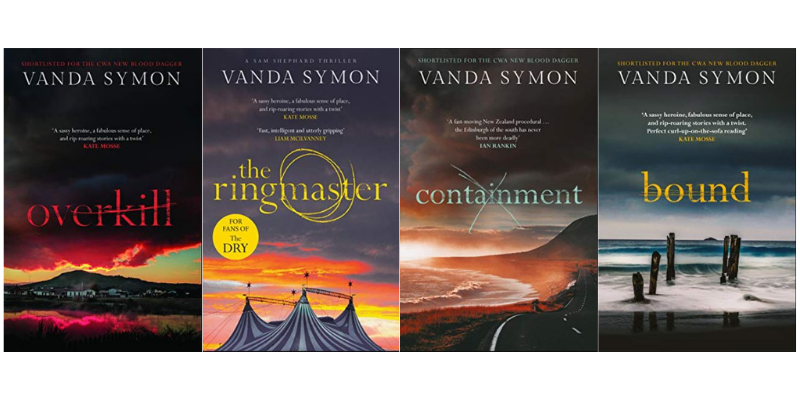
Vanda Symon is the Author of the Detective Sam Shephard crime fiction series and the stand-alone thriller Faceless. She is a three-time finalist for the Ngaio Marsh Award for Best Crime Fiction novel, was shortlisted for the British CWA New Blood Dagger award, and has been nominated for the 2022 USA Barry Awards. Vanda calls Dunedin, New Zealand home.
Overkill: When the body of a young mother is found washed up on the banks of the Mataura River, a small rural community is rocked by her tragic suicide. But all is not what it seems.
Sam Shephard, sole-charge police constable in Mataura, soon discovers the death was no suicide and has to face the realisation that there is a killer in town. To complicate the situation, the murdered woman was the wife of her former lover. When Sam finds herself on the list of suspects and suspended from duty, she must cast aside her personal feelings and take matters into her own hands.
To find the murderer … and clear her name.
A taut, atmospheric and page-turning thriller, Overkill marks the start of an unputdownable and unforgettable series from one of New Zealand’s finest crime writers.
The Ringmaster: Death is stalking the South Island of New Zealand.
Marginalised by previous antics, Sam Shephard, is on the bottom rung of detective training in Dunedin, and her boss makes sure she knows it. She gets involved in her first homicide investigation, when a university student is murdered in the Botanic Gardens, and Sam soon discovers this is not an isolated incident. There is a chilling prospect of a predator loose in Dunedin, and a very strong possibility that the deaths are linked to a visiting circus…
Determined to find out who’s running the show, and to prove herself, Sam throws herself into an investigation that can have only one ending…
Containment: Chaos reigns in the sleepy village of Aramoana on the New Zealand coast, when a series of shipping containers wash up on the beach and looting begins.
Detective Constable Sam Shephard experiences the desperation of the scavengers first-hand, and ends up in an ambulance, nursing her wounds and puzzling over an assault that left her assailant for dead.
What appears to be a clear-cut case of a cargo ship running aground soon takes a more sinister turn when a skull is found in the sand, and the body of a diver is pulled from the sea … a diver who didn’t die of drowning…
As the first officer at the scene, Sam is handed the case, much to the displeasure of her superiors, and she must put together an increasingly confusing series of clues to get to the bottom of a mystery that may still have more victims…
Bound: The New Zealand city of Dunedin is rocked when a wealthy and apparently respectable businessman is murdered in his luxurious home while his wife is bound and gagged, and forced to watch. But when Detective Sam Shephard and her team start investigating the case, they discover that the victim had links with some dubious characters.
The case seems cut and dried, but Sam has other ideas. Weighed down by her dad’s terminal cancer diagnosis, and by complications in her relationship with Paul, she needs a distraction and launches her own investigation.
And when another murder throws the official case into chaos, it’s up to Sam to prove that the killer is someone no one could ever suspect.
19 | She Bleeds Words by Mary Terriette Aseari (Papua New Guinea)
Mary Terriette Aseari debuts with She Bleeds Words, as the Recipient of the Hibiscus Three Publishing Award 2022.
Offered as a collection of Poetry and a Short Story in verse, Aseari not only shines a light on the present-day political, cultural and social challenges being contemplated by Papua New Guineans but speaks of the potential of individual courage, optimism and proactiveness in creating change, for self and community.
20 | Sista, Stanap Strong (A Vanuatu Women’s Anthology) edited by Mikaela Nyman & Rebecca Tobo Olul-Hossen (Fiji)
Sista, Stanap Strong! is an anthology of new writing from Vanuatu by three generations of women – and the first of its kind. With poetry, fiction, essay, memoir, and song, its narrative arc stretches from the days of blackbirding to Independence in 1980 to Vanuatu’s coming of age in 2020. Most of these writers are ni-Vanuatu living in Vanuatu. Some have set down roots in New Zealand, Fiji, the Solomon Islands and Canada. Some were born overseas and have made Vanuatu their home. One is just twenty; another is an octogenarian. The writers in this anthology have chosen to harness the coloniser’s language, English, for their own purposes. They are writing against racism, colonialism, misogyny and sexism. Writing across bloodlines and linguistic boundaries. Professing their love for ancestors, offspring and language – Bislama, vernacular and English. What these writers also have in common is a sharp eye for detail, a love of words, a deep connection to Vanuatu, and a willingness to share a glimpse of their world.
21 | Sunrise to The Coup and Other Stories by Joseph Veramu (Fiji)
Sunrise to The Coup is a collection of short stories by Joseph which looks at the theme of political upheaval in the 1987 and 2000 Fijian coups and how ordinary people react in times of anarchy.
The stories provide insights into how characters rise above violence and chaos to find meaning in their lives.
22 | Kanak Apple Season: Selected Fiction Of Dewe Gorode: Selected Short Fiction of Dewe Gorode (Contemporary Writing in the Pacific) (New Caledonia)
This collection is the first English translation of Dewe Gordoe’s work and is part of Pandanus’ efforts to bring Francophone writing to the attention of readers worldwide. A remarkable collection reflecting the ethnic complexities of the colonial past of New Caledonia, the author’s approach to language reveals an original voice that compels attention. Drawing on the heritage of blood-lines, family, cultural tradition and colonialism, Kanak Apple Season takes her reader on a journey into the Kanak world, providing a fascinating insight into the culture of New Caledonia, at once both Pacific island and French colonial possession.
23 | The Resonance of My Thoughts by Frances Nii (Papua New Guinea)
Francis Nii, a graduate in economics from the University of Papua New Guinea, is a paraplegic and belongs to Salt Nomane Karimui in the Simbu Province of PNG. Formerly a banker, Francis is a novelist and an award-winning essayist. The Resonance of My Thoughts is a collection of some of Francis’ essays on social, economic and political issues affecting Papua New Guinea today. They are an interesting read and at the same time thought-provoking, educational materials for secondary schools and colleges.
24 | The Road: Uprising in West Papua by John Martinkus (West Papua)
The West Papuan independence movement has reignited, and Indonesian troops are cracking down. Chemical weapons have been deployed, hundreds of people killed, tens of thousands displaced – all on Australia’s doorstep. And almost no one is writing about it. In The Road: Uprising in West Papua, John Martinkus gives us a gripping, up-to-date account of the province’s descent into armed conflict and suppression. Replete with vivid detail, new information and photos not seen anywhere else, this revelatory work of journalism shows how and why a highlands road triggered an uprising, and where this might all lead.
25 | The Testimony Project: Papua edited by Charles E. Farhadian (West Papuan)
The Testimony Project: Papua is a compelling set of twelve organic narratives of West Papuans, replete with professional photographs of life in Papua. Researchers at the Yale University Law School and University of Sydney suggest that genocide is happening in Papua. According to Archbishop Desmond Tutu, “The people of West Papua have been denied their basic human rights, including their right to self-determination. Their cry for justice and freedom has fallen largely on deaf ears.” Editor Charles Farhadian and photojournalist Stephan Babuljak give outsiders direct access to Papuan life stories unobstructed by the interpretive schemes of researchers, policymakers, and eco-tourist enthusiasts, letting Papuans speak for themselves.
26 | True Tracks by Terrie Janke (Torres Strait)
The second book in this list by Torries Strait’s author Dr Terrie Janke.
True Tracks is a groundbreaking work that paves the way for respectful and ethical engagement with Indigenous cultures. Using real-world cases and personal stories, award-winning Meriam/Wuthathi lawyer Dr Terri Janke draws on twenty years of professional experience to inform and inspire people working across many industries – from art and architecture to film and publishing, dance, science and tourism.
What Indigenous materials and knowledge are you using? How will your project affect and involve Indigenous communities? Are you sharing your profits with those communities?
True Tracks helps answer these questions and many more, and provides invaluable guidelines that enable Indigenous peoples to actively practise, manage and strengthen their cultural life.
If we keep our tracks true, Indigenous culture and knowledge can benefit everyone and empower future generations.
27 | Voqa ni Veisemati: Echoes of Connection, Vola Italanoa ni Viti e Aotearoa (Fiji)
The idea of writing their own stories and poems in both their Fijian tongue and in English excited and motivated a group of Fijian families in Wellington to gather together to create their own book. Initially unsure of themselves as writers, the group drew strength from each other’s efforts and the sharing of their work. Using their natural storytelling talents both children and adults wrote stories and poems that captured memories of family trips and holidays in Aotearoa and visits to Fiji. Many recalled experiences of village life and family back in Fiji and acknowledged that although now living in Aotearoa these memories still connect families back to their Fijian homeland. This is reflected in the title of this book Voqa ni Veisemati, which translates as Echoes of Connection.
28 | World Beyond: An Anthology of Papua New Guinean Speculative Fiction by Kirsten McGavin & Others (Papua New Guinean)
Positioned at the nexus of Black, Indigenous and Islander futurism, World Beyond consists of nine short stories, each one a unique blend of Papua New Guinean flavour and speculative fiction themes. There is time travel, space travel, futuristic worlds, and hidden cities—all combined with elements of magic, kastom, tokpeles, Tok Pisin, traditional ecological knowledge, our history, legends and mythology.
Featuring stories by:
Vanessa Gordon, Marie Kima, Ruth-Ann Kwimberi, Kirsten McGavin, Augustine Minimbi, Jeremy Hau’ofa Mogi, Deborah Salle, Martha Schulze and Roberta Tonar.
Micronesia Books
North of Melanesia is the Pacific Islands of Micronesia. Micronesia comprises of Guam, Federated States of Micronesia (Chuuk, Kosrae, Pohnpei and Yap), The Republic of Kiribati (West Kiribati), Marshall Islands, Nauru, Northern Mariana Islands and Palau. The name Micronesia was again given to the islands by colonialist settlers, and derives from the Greek ‘mikros’, meaning small, and ‘nesos’, again meaning island – because the islands are small in size.
The Republic of Kiribati is also Polynesian – The main Islands of Kiribati (formerly the Gilbert Islands) are Micronesian and this is where the majority of the republic lives and is governed from. However, The Republic of Kiribati also includes the Phoenix and Line Islands to the east, which fall under the region of Polynesia. Since most people live in the main island group of Kiribati, it is safe to say we identify as Micronesian, but it never hurts to ask. Another anomaly to Micronesia is also another Kiribati Island – Banaba. Currently, there are only a couple of hundred people living on Banaba, but the residents of this phosphate island are looking to place their island under the protectorate of Fiji (Melanesia). Thanks to the British, Australian and New Zealand governments, Banabans were forcibly removed off the islands to Fiji, mainly on the island of Rabi in the 1940s, so they could mine the phosphate. And as a result, Banabans have full citizenship. Though some have relocated back to Banaba, most Banabans feel they have closer ties to Fiji – so watch this space.
These smaller groups of islands also seem to have a smaller amount of published works but are slowly catching up:
29 | American Asylee by Grace James (I-Kiribati)
American Asylee tells the true story of a young Pacific Island woman’s true coming-of-age story. It takes the reader from an endangered small island state to rural Philippine villages and ends in an American jail. She and other detainees share a life inside walls few have ever entered. Narratives of survival, rooted in faiths stronger than the concrete that incarcerates them, will shock, awe, and inspire the reader as the women wait for their cases to be heard. Icons for all domestic violence survivors, faith followers, and humanitarians working towards a more globally just society, these women are the faces of today’s American asylees.
Read my full review.
30 | An Islander’s Voice, Poems by Frederick B. Quinene (Gaum)
An Islander’s Voice, a collection of poems by Guam’s Poet Laureate Frederick B. Quinene, offers a unique perspective on love, life, family, culture, and politics on Guam from the powerful voice of a proud islander.
31 | Attitude 13 by Tanya Chargualaf Taimanglo (Guam)
Attitude 13 is about a daughter of Guam – a collection of Short Stories that offers a glimpse into the life of Chamorros across the spectrum of humanity. Taimanglo’s anthology includes a myriad of voices and points of view with strong Chamorro themes. The stories range from humorous to poignant and offer a mirror for fellow Chamorros and a passport for others to be introduced to the Pacific Islander culture. From the pride of a “Hafa Adai” to the shackles of a culture scarred by colonialism, Attitude 13 is a literary expression of Taimanglo’s love for her island home of Guam.
32 & 33 | Benaghar Series by F. K. Maddison (I-Kiribati)
F. K. Maddison is I-Kiribati, Chinese and British heritage. Benaghar & The Last Sydula is the second book in her fantasy fiction series against a backdrop of Kiribati Mythology and British History.
Read the first book in the series, The Rat, The Wolf & The King’s Fool:
The Aebran Empire is in celebration; the Five Hundred Year War is over and the decampment of soldiers from the Raanian Seas is well underway, but there are those who are dissatisfied with peace …
Phæ’enor Doven, daughter to the most revered captain in the Aebran Army, has known a life of uneventful happiness, but that is all about to change. Along with other military families, she must now journey to her new home, the capital of the empire, Benaghar.
But on arrival, an incident in the harbour embroils Phæ’enor in the darker side of the city. In her quest to uncover the truth behind the events, Phæ’enor becomes unwittingly involved with the city gangs, the undesirables, the affairs of the royals and a piece of lost treasure that will change her world forever.
34 | Chamoru Legends by Teresita Perez (Guam)
Chamoru Legends: A Gathering of Stories retells 12 Chamoru legends and includes personal reflections from author Teresita Lourdes Perez, unique illustrations for each legend by Guam artists, and versions of the legends in the Chamoru language by Maria Ana Tenorio Rivera. The publication is a reversible book featuring the legends in English on one side and in Chamoru on the other. Through these multiple layers of interpretation, the book weaves together strips of wisdom and cultural lessons like the leaves used to shape the Chamoru guåfak, or mat, upon which the earliest Chamoru storytellers sat sharing their versions of these timeless tales.
35 | Coconut Ratz & Kung Fu Cowboys by Joakim ‘Jojo’ Peters & James R. Skouge (Federated States of Micronesia)
Joakim Peter is from the Mortlock Islands of Chuuk State, in the Federated States of Micronesia. He is recognized as both educator and advocate for Micronesian diaspora communities in the Pacific region. This book is autobiographical which makes it a rarity among Micronesian storytellers. Dr. Peter vividly describes his childhood growing up on Ettal, an atoll in the outer island chain. While in high school, he suffered a spinal cord injury which resulted in quadriplegia. His story is one of resilience, self-determination, optimism and appreciation. Coconut Rtaz & Kung Fu Cowboys is appropriate for anyone who is interested in Pacific island cultures and ways of life, including the disability experience as described by one who lives it.
36 | Consuming Ocean Island by Katerina Martina Teaiwa (I-Kiribati)
Consuming Ocean Island tells the story of the land and people of Banaba, a small Pacific island, which, from 1900 to 1980, was heavily mined for phosphate, an essential ingredient in fertilizer. As mining stripped away the island’s surface, the land was rendered uninhabitable, and the indigenous Banabans were relocated to Rabi Island in Fiji. Katerina Martina Teaiwa tells the story of this human and ecological calamity by weaving together memories, records, and images from displaced islanders, colonial administrators, and employees of the mining company. Her compelling narrative reminds us of what is at stake whenever the interests of industrial agriculture and indigenous minorities come into conflict. The Banaban experience offers insight into the plight of other island peoples facing forced migration as a result of human impact on the environment.
37 | Dry Nights by Pep Borja (Guam)
Dry Nights is a powerful collection of poetry that explores the deep impacts of love, sensuality, loss and longing that pervade the night with memories often left unspoken in the day. Dry Nights utilizes a variety of poetic forms, distinctly tropical metaphors, musical references, and exquisite illustrations to capture the tender wounds of love. This hand-sized book belies its brevity in the breadth of experiences and stories conveyed in each poem, creating a haunting prosaic of what author Pep Borja describes as “reflections about what it’s like to be close to someone.” Borja navigates the complex spaces of intimacy, addiction, and suicide to show the ways dark emotions can be vibrant in the shadows. Coated with ambiguity, intrigue, and powerful imagery, Dry Nights does not hold your hand and gently lead you, rather, it demands you jump headfirst with eyes wide open into its soul.
38, 39, 40 & 41 | From Unincorporated Territory Series by Craig Santoz Perez (Guam)
Craig is an indigenous Chamoru (Chamorro) from the Pacific Island of Guåhan (Guam). He is a poet, scholar, editor, publisher, essayist, critic, book reviewer, artist, environmentalist, and political activist.
From Unincorporated Territory is a series of poems by Perez about his homeland, Guam. There are four books in total, most of which you can get via Amazon.
From unincorporated territory [hacha] is the first book of native Chamorro poet Perez’s ongoing series about his homeland, the Western Pacific Island of Guåhan (Guam). Perez weaves avant-garde, eco-poetic, indigenous, documentary, multilingual, and abstract expressionist modes to tell the complex story of Guam’s people, culture, history, politics, and ecologies. Since its original publication in 2008, [hacha] has received positive reviews, and it has been taught in universities throughout Asia, the Pacific, the United States, Canada, and Europe. Several scholars have written essays about Perez’s work.
From unincorporated territory [saina] With the Saina as his figurative vessel-a ship built in modern times as an exact replica of the swift outriggers designed and sailed by the Chamorro people until banned by their oppressors-Craig Santos Perez deftly navigates the complexities in his bracing exploration of the personal, historical, cultural, and natural elements of his native Guam and its people. As the title-from unincorporated territory [saina]-suggests, by understanding where we are from, we can best determine where we are going. Perez collages primary texts and oral histories of the colonial domination and abuse brought by the Spanish, the Japanese, the United States, and the capitalist entertainment/travel industry, with intimate stories of his childhood experiences on Guam, his family’s immigration to the US, and the evocatively fragmentary myths of his ancestors. Resonant too in Perez’s title, and throughout this work, is this poet’s evocation of the unincorporated and unfathomed elements of our natures, as he seeks the means to access an expansiveness that remains inexpressible in any language.
From unincorporated territory [guma’]. Perez has lived for two decades away from his homeland. This new collection maps the emotional and geographic cartographies of his various migrations, departures, and arrivals. Through a variety of poetic forms, the poet highlights the importance of origins and customs amidst new American cultures and terrains. Furthermore, this book draws attention to, and protests, the violent currents of colonialism and militarism currently threatening Guåhan, a “strategic” US territory since 1898. The poet memorializes what his people have lost and insists that we must protect and defend what we have left of home. This collection will engage those interested in Pacific literature, multicultural, indigenous poetry, mixed-genre, multilingual experiments, ecopoetics, and those who want to explore intersections between poetry, politics, history, and culture.
From unincorporated territory [lukao] is the fourth book in native Chamorro poet Craig Santos Perez’s ongoing series about his homeland, the Western Pacific Island of Guåhan (Guam), and his current home, Hawai i. He utilizes eco-poetic, decolonial, diasporic, indigenous, documentary, epic, and avant-garde modes to weave stories of creation, birth, migration, food sovereignty, and parenting. This work not only protests the devastating impacts of colonialism, militarism, and environmental injustice across the Pacific, it also expresses a vision of a sustainable and hopeful future.
42 | Iep Jāltok (Poems from a Marshallese Daughter) by Kathy Jentnil-Kijiner
Marshallese poet and activist Kathy Jetnil-Kijiner’s writing highlights the traumas of colonialism, racism, forced migration, the legacy of American nuclear testing, and the impending threats of climate change. Bearing witness at the front lines of various activist movements inspires her work and has propelled her poetry onto international stages, where she has performed in front of audiences ranging from elementary school students to more than a hundred world leaders at the United Nations Climate Summit.
The poet connects us to Marshallese daily life and tradition, likening her poetry to a basket and its essential materials. Her cultural roots and her family provide the thick fibre and the structure of the basket. Her diasporic upbringing is the material which wraps around the fibre, an essential layer to the structure of her experiences. And her passion for justice and change, the passion which brings her to the front lines of the activist movements-is the stitching that binds these two experiences together in Iep Jāltok.
43 | In between Seasons by Tabol Michael (Palau)
Tabol Michael was born in Honolulu, Hawaii, to Palauan natives, Johannes; Francesca Michael. A “self-proclaimed” artist, he began writing songs and poetry at the age of 12 as an expressional outlet, and to this day, he hasn’t put down the pen. Whether he is expressing himself through illustrations, photography, music, or poetry, he is always pushing his truth to the forefront of his art. “In Between Seasons” is Tabol’s first published collection of original artwork.
A one-of-a-kind compilation of song lyrics, poetry, full-colour illustrations and photographs dating back to the artist’s adolescent years, into his prime. With each chapter of this original art piece representing a new season, join artist, Tabol Michael, on a journey to enlightenment through a unique lens, “In Between Seasons“.
44 | Indigenous Literatures from Micronesia (Anthology) edited by Evelyn and Emelihter Kihleng
For the first time, poetry, short stories, critical and creative essays, chants, and excerpts of plays by Indigenous Micronesian authors have been brought together to form a resounding―and distinctly Micronesian―voice. With over two thousand islands spread across almost three million square miles of the Pacific Ocean, Micronesia and its peoples have too often been rendered invisible and insignificant both in and out of academia. This long-awaited anthology of contemporary indigenous literature will reshape Micronesia’s historical and literary landscape.
Presenting over seventy authors and one hundred pieces, it features eight of the thirteen basic language groups, including Palauan, Chamorro, Chuukese, I-Kiribati, Kosraean, Marshallese, Nauruan, Pohnpeian, and Yapese. The volume editors, from Micronesia themselves, have selected representative works from throughout the region―from Palau in the west, to Kiribati in the east, to the global diaspora. They have reached back for historically groundbreaking work and scouted the present for some of the most cited and provocative of published pieces and for the most promising new authors.
Richly diverse, the stories of Micronesia’s resilient peoples are as vast as the sea and as deep as the Mariana Trench. Challenging centuries-old reductive representations, writers passionately explore seven complex themes: “”Origins”” explores creation, foundational, and ancestral stories; “”Resistance”” responds to colonialism and militarism; “”Remembering”” captures diverse memories and experiences; “”Identities”” articulates the nuances of culture; “”Voyages”” maps migration and diaspora; “”Family”” delves into interpersonal and community relationships; and “”New Micronesia”” gathers experimental, liminal, and cutting-edge voices.
Indigenous Literatures from Micronesia reflects a worldview unique to the islands of Micronesia, yet it also connects to broader issues facing Pacific Islanders and indigenous peoples throughout the world. It is essential reading for anyone interested in Pacific, indigenous, diasporic, postcolonial, and environmental studies and literature.
45 | Interim by Des Spicer Orak (Palau)
Interim is a short collection of poems written by Des Spicer-Orak, a queer mixed Palauan poet from the Pacific Northwest. Interim signifies the experiences between life and death. Exploring the intersections of identity, Interim captures the weight of culture, religion, climate crises, rejection, and connection. This book highlights the duality that exists in all things, and intentionally emphasizes the connection between grief and growth. Through the lens of various relationships, Interim tells a story of hurt and healing. At the heart of these poems is the fight for existence, reclamation, and resistance.
46 | Legends, Traditions and Tales of Nauru by Timothy Detudamo (Nauruan)
In a fast globalizing world, group histories, traditions and memories, especially of smaller countries, are at risk of being lost. In 1938, Head Chief Detudamo had the foresight to transcribe and then translate, a series of lectures relating to the legends, customs and tales of Nauru, delivered by what he termed ‘native teachers’. Seventy years later, in line with its aim of ensuring that the historic and contemporary ‘voice’ of the Pacific is heard on the world stage, IPS Publications is pleased to make them more widely available in Legends, Traditions & Tales of Nauru.
47 | Mother Tree by Olympia Terral (Guam)
Mother Tree tells the story of Atisa, the last surviving adult håyon lågu, or “tree of the north” on Guam. She has become the Mother Tree and the final hope for this beautiful native species to survive. Faced with many dangers, she finds joy in her friendships with the jungle creatures around her. Mother Tree teaches the value of protecting the natural world around us. It inspires young readers to learn more about native species and how to help them thrive.
48 | My Urohs by Emelihter Kihleng (Federated States of Micronesia)
The first collection of poetry by a Pohnpeian poet, Emelihter Kihleng’s My Urohs is described by distinguished Samoan writer and artist Albert Wendt as “refreshingly innovative and compelling, a new way of seeing ourselves in our islands, an important and influential addition to our [Pacific] literature.”
49 | Navigating CHamoru Poetry: Indigeneity, Aesthetics, and Decolonization (Critical Issues in Indigenous Studies) by Craig Santos Perez (Guam)
Navigating CHamoru Poetry focuses on Indigenous CHamoru (Chamorro) poetry from the Pacific Island of Guåhan (Guam). Poet and scholar Craig Santos Perez brings critical attention to a diverse and intergenerational collection of CHamoru poetry and scholarship. Throughout this book, Perez develops an Indigenous literary methodology called “wayreading” to navigate the complex relationship between CHamoru poetry, cultural identity, decolonial politics, diasporic migrations, and Native aesthetics. Perez argues that contemporary CHamoru poetry articulates new and innovative forms of indigeneity rooted in CHamoru customary arts and values, while also routed through the profound and traumatic histories of missionization, colonialism, militarism, and ecological imperialism.
50 | Storyboard 19: A Journal of Pacific Imagery (Guam)
For over 20 years, Storyboard: A Journal of Pacific Imagery has promoted literacy in the Pacific Islands and annually invites writers and artists to submit poetry, prose and artwork responding to current themes and topics impacting the Pacific Islands. Storyboard is published by the University of Guam’s Division of English and Applied Linguistics in partnership with the University of Guam Press.
51 | Sweat and Salt Water by Teresia Kieuea Teaiwa (I-Kiribati)
Dr. Katerina Martina Teaiwa is Convener of Pacific Studies in the College of Asia and the Pacific, and Head of the Dept. of Gender, Media and Cultural Studies in the School of Culture, History and Language, Australian National University. She was born and raised in Fiji and is of Banaban, I-Kiribati and African American descent.
Sea and Salt Water features a selection of Teaiwa’s scholarly and creative contributions captured in print over a professional career cut short at the height of her productivity. The collection honours her legacy in various scholarly fields, including Pacific studies, Indigenous studies, literary studies, security studies, and gender studies, and on topics ranging from militarism and tourism to politics and pedagogy. It also includes examples of Teaiwa’s poems. Many of these contributions have had significant and lasting impacts. Teaiwa’s “bikinis and other s/pacific notions,” published in The Contemporary Pacific in 1995, could be regarded as her breakthrough piece, attracting considerable attention at the time and still cited regularly today. With its innovative two-column format and reflective commentary, “Lo(o)sing the Edge,” part of a special issue of The Contemporary Pacific in 2001, had similar impact. Teaiwa’s writings about what she dubbed “militourism,” and more recent work on militarization and gender, continue to be very influential. Perhaps her most significant contribution was to Pacific studies itself, an emerging interdisciplinary field of study with distinctive goals and characteristics. In several important journal articles and book chapters reproduced here, Teaiwa helped define the essential elements of Pacific studies and proposed teaching and learning strategies appropriate for the field.
52 | Teaote and The Wall by Marita Davies (I-Kiribati)
Teaote decides to build a sea wall to protect her village from huge waves. Her neighbours build their walls too but she is very proud of hers and thinks it is the best. One day the waves are very, very high and her wall stands but is damaged a bit. So she and Kairo, her friend, help each other to build up their walls to protect both their houses. Teaote and The Wall is about hope, determination and the people that need a global solution. This book is all about spreading awareness of the effects of climate change on Kiribati without using big words like climate change or environmental awareness. Let’s talk big waves and hot suns. Let’s talk about a country that so many people don’t even know exists.
53 | Te Rii Ni Banaba by Raobeia Ken Sigrah (I-Kiribati)
Te Rii ni Banaba – backbone of Banaba, is a history of Banaba, situated in the Central Pacific, once known as Ocean Island. By recording genealogies, myths, legends, customs, culture, magic rituals and the long-kept secrets of the te Aka clan reveals the uniqueness of Banaban identity.
The arrival of the I-Matang (Europeans), beachcombers, blackbirders, whalers, missionaries, and the miners in 1900, with the discovery of phosphate (guano) and a heartbreaking trail of loss, exploitation and environmental degradation from mining.
The toll of World War II atrocities suffered during the Japanese invasion, and the subsequent forced exile of the Banabans from their homeland. The recorded names of those tragically killed on Banaba during the War and displaced Banaban survivors who were exiled on Rabi, Fiji in 1945. This second edition includes additional photographs, the discovery of the missing link of the Toakira, the search for Teimanaia’s skull, identification of the landowners from the first agreements in 1900, and insights into the famous 1975 Banaban Court Case. It also provides details of villages lost to mining for future generations to trace their genealogies and land rights.
Although remote and now decimated by mining, Banaba remains in the hearts of all Banabans.
54 | The Properties of Perpetual Light by Julian Aguon (Guam)
The Properties of Perpetual Light is a homage to the work of the activist-writer, Julian Aguon who describes this book as ”the work of bearing witness, wrestling with the questions of one’s day, telling children the truth.” With prose and poetry both bracing and quiet, Aguon weaves together stories from his childhood in the villages of Guam with searing political commentary. Throughout the book, Aguon grapples with one heartbreaking loss after another by immersing himself in the beauty of his island, the magic of Micronesia, and the wisdom of his favourite books and elders.
55 | The Rope of Tradition by Lino M. Olopai (Northern Marianas)
Indigenous Micronesian cultures and the issues and challenges confronting cultural preservation in the face of rapid globalization. Indigenous cultures throughout Micronesia have undergone major changes over the six decades since the end of World War II, a situation that has been particularly acute on Saipan, the capital island in the Commonwealth of the Northern Mariana Islands. The Rope of Tradition, written by Saipan Carolinian Lino M. Olopai with the assistance of cultural anthropologist Dr. Juliana Flinn, describes Mr. Olopai’s longstanding efforts to document and better understand his rich cultural heritage and to seek a balance between traditional ways and the demands of the modern world.
56 | Ulithi Atoll, Micronesia: Recalling the Past, Reaffirming the Future (Various Authors) (Yap)
Through the collaborative efforts of Dr. Rebecca A. Stephenson, Dr. Mary L. Spencer, and 12 contributing authors, this book explores various aspects of life, culture, economics, human development, island challenges, and ecology in the Ulithi Atoll, which consists of the islets Mogmog, Asor, Falalop, Fasserai, and Lossau. The book traces the successive periods of competitive explorers and traders; the Spanish, German, Japanese, and US colonial periods; and significantly, Ulithi’s emergence into its self-governing status within Yap State of the Federated States of Micronesia. It also has two extensive bibliographies, commentary, figures, and photographs.
57 | Waa in Storms by Teweiariki Teaero (I-Kiribati)
Waa in Storms is a collection of the Teweiariki Teaero’s poetry, prose, drawings and paintings, containing reflections on a dark period in his personal life, and on crime and politics in his homeland of Kiribati.
58 | Year of the Reaper by Makiia Lucier (Guam)
Makiia Lucier grew up on the Pacific island of Guam and has degrees in journalism and library science from the University of Oregon and the University of Wisconsin-Milwaukee.
Year of the Reaper: Before an ambush by enemy soldiers, Lord Cassia was an engineer’s apprentice on a mission entrusted by the king. But when plague sweeps over the land, leaving countless dead and devastating the kingdom, even Cas’ title cannot save him from a rotting prison cell and a merciless sickness.
Three years later, Cas wants only to return to his home in the mountains and forget past horrors. But home is not what he remembers. His castle has become a refuge for the royal court. And they have brought their enemies with them.
When an assassin targets those closest to the queen, Cas is drawn into a search for a killer…one that leads him to form an unexpected bond with a brilliant young historian named Lena. Cas and Lena soon realize that who is behind the attacks is far less important than why. They must look to the past, following the trail of a terrible secret-one that could threaten the kingdom’s newfound peace and plunge it back into war.
Polynesian Books
Polynesia encompasses the largest amount of Pacific Islands, hence it’s name – poly ‘many’ and nēsoi ‘islands’ and includes the following islands: American Samoa, Aotearoa (a.k.a. New Zealand), Cook Islands, French Polynesia (Austral Islands, The Marquesas, Society Islands and Tahiti, Tuamotu Islands), Hawai’i, Niue, Pitcairn Islands, Rapa Nui (a.k.a. Easter Island), Samoa, Tokelau, Tonga and Tuvalu.
And just as Polynesia has many islands, it is also at the forefront of producing the highest amount of literary works out of the 3 Pacific regions since the 1960s:
Especially from Hawai’i, New Zealand, Sāmoa, and Tonga. Generally rooted in traditional culture, it reflects the continued importance of oral history, storytelling, and indigenous belief systems in the region:
59 | Auē by Becky Manawatu (Māori)
Taukiri was born into sorrow. Auē can be heard in the sound of the sea he loves and hates, and in the music, he draws out of the guitar that was his father’s. It spills out of the gang violence that killed his father and sent his mother into hiding, and the shame he feels about abandoning his eight-year-old brother to a violent home.
But Taukiri’s brother, Ārama, is braver than he looks, and he has a friend, and his friend has a dog, and the three of them together might just be strong enough to turn back the tide of sadness.
This bestselling multi-award-winning novel is both raw and sublime, introducing a compelling new voice in New Zealand fiction.
60 | Black Marks on a White Page (Anthology) edited by Witi Ihimaera & Tina Makereti (Māori)
A stunning collection of Oceanic stories for the 21st century.
Stones move, whale bones rise out of the ground like cities, a man figures out how to raise seven daughters alone. Sometimes gods speak or we find ourselves in a not-too-distant future. Here are the glorious, painful, sharp and funny 21st century stories of Maori and Pasifika writers from all over the world. Vibrant, provocative and aesthetically exciting, these stories expand our sense of what is possible in Indigenous Oceanic writing.
Witi Ihimaera and Tina Makereti present the very best new and uncollected stories and novel excerpts, creating a talanoa, a conversation, where the stories do the talking. And because our commonalities are more stimulating than our differences, the anthology also includes guest work from an Aboriginal Australian writer and several visual artists whose work speaks to similar kaupapa.
Join us as we deconstruct old theoretical maps and allow these fresh Black Marks on the White Page to expand our perception of the Pacific world.
61 | Bloody Woman by Lana Lopesi (Sāmoan)
Bloody Woman is bloody good writing.
This wayfinding set of essays, by acclaimed writer and critic Lana Lopesi, explores the overlap of being a woman and Sāmoan. Writing on ancestral ideas of womanhood appears alongside contemporary reflections on women’s experiences and the Pacific.
These essays lead into the messy and the sticky, the whispered conversations and the unspoken. As Lopesi writes, ‘Bloody Woman has been scary to write … “Inputting words to my years of thinking, following the blood and revealing the evidence board in my mind, I am breaking a silence to try to understand something. It feels terrifying but right.”
These acts of self-revelation ultimately seek to open up new spaces, to acknowledge the narratives not yet written, and the voices to come.
62 | Brown Girls in Bright Red Lipstick (Sāmoan and Cook Islander)
Brown Girls in Bright Red Lipstick is a collection of poetry by Courtney Sina Meredith. Meredith has established a local and international reputation as a performer, poet, musician and playwright. Her work is an on-going discussion of contemporary urban life with an underlying Pacific politique and an educated, politically aware, international voice.
63 | Bugs by Whiti Hereaka (Māori)
Whiti Hereaka is a playwright, novelist, screenwriter and a barrister and solicitor. She holds a Masters in Creative Writing (Scriptwriting) from the International Institute of Modern Letters, Victoria University, and is a trustee of the Māori Literature Trust.
Bugs is about the unfolding lives of three young people in their last year of school in small-town New Zealand. Life is slow, and it seems not much happens in town or in Jez and Bugs’s lives. But when Stone Cold arrives, the three come to different conclusions about how to deal with being trapped in a small town and at the bottom of the heap.
64 | Dawn Raid by By Pauline Vaeluaga Smith (Sāmoan / Tuvaluan)
Pauline (Vaeluaga) Smith is an author and educationalist of Sāmoan, Tuvaluan, Scottish and Irish descent.
“Imagine this: You’re having an amazing family holiday, one where everyone is there and all 18 of you are squeezed into one house. All of sudden it’s 4 o’clock in the morning and there’s banging and yelling and screaming. The police are in the house pulling people out of bed …”
Sofia is like most 12-year-old girls in New Zealand. How is she going to earn enough money for those boots? Why does she have to give that speech at school? Who is she going to be friends with this year?
It comes as a surprise to Sofia and her family when her big brother, Lenny, starts talking about protests, “overstayers”, and injustices against Pacific Islanders by the government. Inspired by the Black Panthers in America, a group has formed called the Polynesian Panthers, who encourage immigrant and Indigenous families across New Zealand to stand up for their rights. Soon the whole family becomes involved in the movement.
Told through Sofia’s diary entries, with illustrations throughout, Dawn Raid is the story of one ordinary girl living in extraordinary times, learning how to stand up and fight.
65 | Falling Into Rarohenga by Steph Matuku (Māori)
Steph Matuku is a freelance writer from Taranaki. She enjoys writing stories for young people and her work has appeared on the page, stage and screen.
Falling into Rarohenga: It seems like an ordinary day when Tui and Kae, fourteen-year-old twins, get home from school – until they find their mother, Maia, has disappeared and a swirling vortex has opened up in her room. They are sucked into this portal and dragged down to Rarohenga, the Māori Underworld, a shadowy place of infinite dark levels, changing landscapes and untrustworthy characters. Maia has been kidnapped by their estranged father, Tema, enchanted to forget who she really is and hidden somewhere here. Tui and Kae have to find a way through this maze, outwit the shady characters they meet, break the spell on their mother, and escape to the World of Light before the Goddess of Shadows or Tema holds them in Rarohenga forever.
66 | From the Centre: A Writer’s life by Patricia Grace (Māori)
Renowned writer Patricia Grace begins her remarkable memoirs beside her beloved Hongoeka Bay. It is the place she has returned to throughout her life, and fought for, one of many battles she has faced:
‘It was when I first went to school that I found out that I was a Maori girl . . . I found that being different meant that I could be blamed . . .’
As she shows, her experiences — good and bad, joyous and insightful — have fuelled what became a focus of her life in From the Centre.
67 | Greta and Valdin by Rebecca K. Reilly (Māori)
Rebecca K Reilly is a New Zealand author. Of Māori descent, she identifies with the iwi of Ngāti Hine and Ngāti Wai. Her debut novel Greta & Valdin (2021) received the 2019 Adam Foundation Prize in Creative Writing. At the 2022 Ockham New Zealand Book Awards, it was shortlisted for the Jann Medlicott Acorn Prize for Fiction and received the Hubert Church prize for the best first book of fiction.
Valdin is still in love with his ex-boyfriend Xabi, who used to drive around Auckland in a ute but now drives around Buenos Aires in one. Greta is in love with her fellow English tutor Holly, who doesn’t know how to pronounce Greta’s surname, Vladisavljevic, properly. From their Auckland apartment, brother and sister must navigate the intricate paths of modern romance and weather the small storms of their eccentric Māori–Russian–Catalonian family. This beguiling and hilarious novel by Adam Foundation Prize winner Rebecca K Reilly owes as much to Shakespeare as it does to Tinder. Set in a world that is deeply familiar (but also a bit sexier and more stylish than the real one), Greta and Valdin will speak to anyone who has had their heartbroken or has decided that they don’t want to be a physicist anymore, or has wondered about all of the things they don’t know about their family.
68 | How to Loiter In a Turf War: A Novel by Coco Solid (Māori & Sāmoan)
Jessica Hansell (Ngapuhi/Samoa) is a writer, multimedia artist and musician from Auckland, long known by her rap nickname Coco Solid.
Hansell was named the Fulbright Creative New Zealand Pacific Writer in residence in 2018, studying at the University of Hawai’i, where she started writing How To Loiter In A Turf War while researching gentrification in the Pacific.
Like nothing you’ve read before, How to Loiter in a Turf War is a lucid, genre-bending, cinematic work of fiction from one of Aotearoa’s most versatile artists. It’s a day in the life of three friends beefing with their own city, Tamaki Makaurau. With gentrification closing in and racial tensions sweltering, the girls must cling to their friendship like a life raft, determined not to let their neighbourhood drift out to sea.
Fast, ferociously brilliant, crack-up funny and unforgettably true.
69 | Huia Short Stories 14: Contemporary Māori Fiction
Huia Publishers present the best short stories from the Pikihuia Awards for Māori writers 2021. This competition, run by the Māori Literature Trust and Huia Publishers, is held every two years to promote Māori writers and their work. The competition attracts entries each year from writers of all ages and those who are starting out to seasoned authors. This collection of finalists’ fiction celebrates Māori writing, introduces new talent and gives an opportunity for Māori writers to shine.
70 | Hine and the Tohunga Portal by Ataria Rangipikitia Sharman (Māori)
Ataria Rangipikitia Sharman (Tapuika, Ngāpuhi) is a writer of essays, poetry and articles. She is the Editor at The Pantograph Punch and creator of Awa Wahine
Hine and the Tohunga Portal is a fast-paced fantasy adventure. Hine and her brother, Hōhepa, unwittingly step through a portal into an ancient realm inhabited by the atua Māori (Māori deities), Kea bird tribes, patupaiarehe (fairy people), moa and giant eagles. This world is in turmoil as evil sorcerer Kae has built a cursed army and intends to rule this world and everything in it. He sees the opportunity to dominate the modern world as well, by kidnapping Hōhepa and using his life force to reopen the portal between the worlds. This sets Hine on a quest to learn ancient knowledge from the goddesses Hineteiwaiwa and Mahuika and her ancestors, find the medicine to revoke the curse on the warriors and gain the support of the Kea and patupaiarehe to fight Kae and rescue Hōhepa.
71 | House of Many Gods by Kiana Davenport (Hawai’i)
From Kiana Davenport, the bestselling author of Song of the Exile and Shark Dialogues comes another mesmerizing novel about her people and her islands. Told in spellbinding and mythic prose, House of Many Gods is a deeply complex and provocative love story set against the background of Hawai’i and Russia. Interwoven throughout with the indelible portrait of a native Hawaiian family struggling against poverty, drug wars, and the increasing military occupation of their sacred lands.
Progressing from the 1960s to the turbulent present, the novel begins on the island of O’ahu and centres on Ana, abandoned by her mother as a child. Raised by her extended family on the “lawless” Wai’anae coast, west of Honolulu, Ana, against all odds, becomes a physician. While tending victims of Hurricane ‘Iniki on the neighbouring island of Kaua’i, she meets Nikolai, a Russian filmmaker with a violent and tragic past, who can confront reality only through his unique prism of lies. Yet he is dedicated to recording the ecological horrors in his motherland and across the Pacific.
As their lives slowly and inextricably intertwine, Ana and Nikolai’s story becomes an odyssey that spans decades and sweeps the reader from rural Hawaii to the forbidding Arctic wastes of Russia; from the poverty-stricken Wai’anae coast to the glittering harshness of “new Moscow” and the haunting, faded beauty of St. Petersburg. With stunning narrative inventiveness, Davenport has created a timeless epic of loss and remembrance, of the search for family and identity, and, ultimately, of the redemptive power of love.
72 | Hyphen American by Tonga Victoria
FBI Agents Junior Cortez and Devonte Johnson hunt for R.E.D, a highly classified government program designed to control Earth’s climate, all the while TechTon Sales Associate Sam Kelly searches for her biological mother.
Read Hyphen American of the trilogy series that centres on Polynesian culture and addresses the global issue of our time.
73 | I Am Lupe by Sela Atiola (Tongan)
I am Lupe author, Sela Atiola, is a Tongan writer residing in Australia.
Her writing career is inspired by her experiences as a Pacific woman and passion for meaningful representation of Pacific people.
“We are all different and no one is the same. There is no one else in the world like you.”
When Lupe moves to Australia with her family, she begins to notice that she looks different from the other children in her school.
Unsure of her cultural background, the children begin to ask her questions like “what are you?”.
Confused by the questions, Lupe turns to her mother for answers.
She doesn’t receive the response she was expecting.
Instead, Lupe’s mother reminds her of all the wonderful qualities that make her who she is.
74 | Kurangaituku by Whiti Hereaka (Māori)
Kurangaituku is the story of Hatupatu told from the perspective of the traditional ‘monster’, Kurangaituku, the bird-woman. In the traditional story, told from the view of Hatupatu, he is out hunting and is captured by a creature that is part bird and part woman. The bird-woman imprisons him in her cave in the mountains. Hatupatu eventually escapes and is pursued by Kurangaituku. He evades her when he leaps over hot springs, but Kurangaituku goes into them and dies.
In this version of the story, Kurangaituku takes us on the journey of her extraordinary life – from the birds who sang her into being, to the arrival of the Song Makers and the change they brought to her world, and her life with Hatupatu and her death. Through the eyes of Kurangaituku, we come to see how being with Hatupatu changed Kurangaituku, emotionally and in her thoughts and actions, and how devastating his betrayal of her was.
75 | Legacy by Whiti Hereaka (Māori)
Legacy is another book by writer Whiti Hereaka. Seventeen-year-old Riki is worried about school and the future, but mostly about his girlfriend, Gemma, who has suddenly stopped seeing or texting him. But on his way to see her, he’s hit by a bus and his life radically changes. Riki wakes up one hundred years earlier in Egypt, in 1915, and finds he’s living through his great-great-grandfather’s experiences in the Māori Contingent. At the same time that Riki tries to make sense of what’s happening and find a way home, we go back in time and read transcripts of interviews Riki’s great-great-grandfather gave in 1975 about his experiences in this war and its impact on their family. Gradually we realise the fates of Riki and his great-great-grandfather are intertwined.
76 & 77 | Lauele Fractured Folktales by Lehua Parker (Hawai’i)
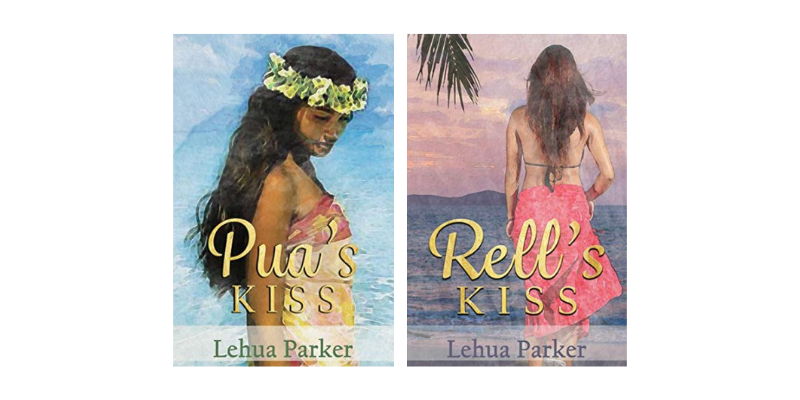
Originally from Hawaii and a Kamehameha Schools graduate, Lehua Parker writes speculative fiction for kids and adults that often explores the intersections of Hawaii’s past, present, and future. Her published works include the Niuhi Shark Saga trilogy, Chicken Skin Stories, and Lauele Fractured Folktales, as well as plays, poetry, short stories, and essays.
When you’re dating a Niuhi shark in human form, there’s no such thing as a casual Hawaiian fling.
The last thing Justin wants is complications. Jilted at the altar, he’s spending his pre-paid Hawaiian honeymoon alone—sort of. Sasha, his ex, won’t get out of his head. Frustrated, he takes a walk at sunset and discovers a beautiful woman asleep on the sand.
But Pua’s not really a woman.
A shape-shifting Niuhi shark, Pua feels compelled to visit the beach at Lauele. She doesn’t care that it’s forbidden by her father, the ocean god Kanaloa, or that breaking kapu can only end in blood, tears, and teeth. Justin’s a tourist. Here today, gone tomorrow.
Nobody’d even miss him.
What starts out as a casual flirtation soon turns into a high-stakes cat and mouse courtship as neither Justin nor Pua are who—or what—they seem.
Inspired by The Little Mermaid, Pua’s Kiss is Book 1 in Lauele Fractured Folktales, reimagined stories inspired by the world’s oldest tales retold with a Hawaiian twist.
Rell never imagined an 18th birthday like this.
When Rell’s stepmonster Regina summons her to Lauele, Hawai’i, she knows better than to expect umbrella drinks, birthday presents, and open arms. The most she hopes for is some quality time with her twin step-sisters, a walk on the beach, and a little fun at a charity auction sponsored by her father’s corporation.
From the moment Rell lands in Honolulu, her life turns upside down as she reconnects with her Hawaiian heritage and discovers she’s surrounded by hidden agendas, lies, and ancient family obligations.
To save Lauele and Get Wet Prosthetics, Rell will have to navigate an island filled with Menehune day laborers, a snow goddess’s vacation rental, a toppled sacred ‘aumakua stone, disappearing clothing, ‘Ilima as a not-so-fairy-godmother, and—worst of all—her stepmonster’s lawyers.
Inspired by Cinderella, Rell’s Kiss is Book 2 in Lauele Fractured Folktales, reimagined stories inspired by the world’s oldest tales retold with a Hawaiian twist.
Lauele Fractured Folktales are loosely connected standalone stories in the Lauele Universe that can be read in any order.
78 | Marbles and Mangoes by Sione Tapani Mangisi (Tongan)
Marbles and Mangoes is a dual English Tongan language book where Sione Tapani Mangisi shares some of his memories about growing up in Tonga in the 1950s. His topic is marbles, a children’s game popular when he was young. The book describes how games were set up by groups of boys under the large old mango trees in villages under complex rules that encouraged not just high levels of skill but also careful strategising to ensure that each player won as many marbles as possible. He discusses the traditional hard nut fruits that were used in pre-European times before the introduction and adoption of glass and ceramic marbles. The book describes the alternate games that little children and girls played and finishes with a guide to setting up your own game. There is a guide to Tongan spelling and pronunciation. It’s suitable for readers of all ages and is particularly designed for adults looking for stories about Tonga in the Tongan language to read to their children and grandchildren.
79 | Ned and Katina: A True Love Story by Patricia Grace (Māori)
A true story of love in wartime and in peace. In Crete during the Second World War a wounded Māori Battalion soldier and a young Cretan woman fall in love when the young infantryman is sheltered by her family. After marrying in Crete, Ned and Katina come back to live in New Zealand, settling in the Far North. They live a long, rich and happy life together, raising a family and involving themselves in community affairs there and in the Wellington region. Ned dies in 1987, and Katina in 1996. Years later, the whanau of Ned and Katina approached writer Patricia Grace to compile their parents’ story. Ned & Katina is the result. This warm, beautifully written true story is impossible to put down.
80, 81 & 82 | Niuhi Shark Saga by Lehua Parker (Hawai’i)
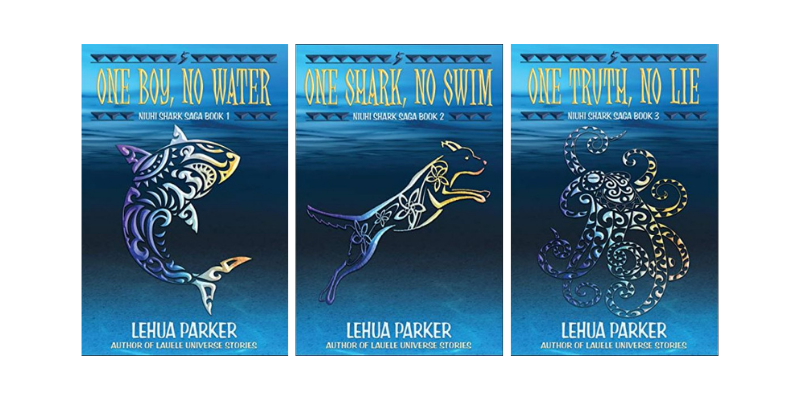
One Boy, No Water is Book 1 in the Niuhi Shark Saga trilogy. Told from an indigenous perspective and set in a contemporary Hawaiian world where all the Hawaiian myths and legends are real, the series explores belonging, adoption, being different, bullying, defining family, and learning to turn weaknesses into strengths.
Through the series, Zader discovers he’s not really a boy allergic to water; he’s something much more special, dangerous, and powerful. His adoptive brother Jay discovers what happens when the golden surfing star falls from his pedestal and has to choose to make the long climb back from a serious injury. It’s the ties that bind and support the brothers that allow them to create their own destinies.
When you’re allergic to water, growing up in Hawaii isn’t always paradise.
Everybody loves Jay. I love my brother, too. Sometimes I wish I could be him–a surfing star instead of the weird kid allergic to water, the Blalahs’ favourite punching bag. But that’s not the worst of it. In the middle of the night, I dream. There’s a mysterious girl who lives in a magical place and acts like she knows me better than I know myself. We hide from the Man with Too Many Teeth. Some nights I wake up with my heart pounding and the urge to eat raw meat. It’s just a dream, right? But then I saw him, the Man with Too Many Teeth, walking along the reef at Piko Point. Not even Jay can protect me now.
One Shark, No Swim is Book 2 in the Niuhi Shark Saga trilogy.
With Niuhi sharks, even out of the water, you’re not safe.
My dreams are nightmares. I don’t dare fall asleep. Guro Hari’s teaching me Filipino knife fighting, but I’m too scared to come out of the bathroom. I’d rather learn Lua and train with Jay and Char Siu, but Uncle Kahana won’t let me. He says it’s for our safety, but I don’t believe him. Uncle Kahana’s obsessed with Niuhi stories, Hawaiian myths about sharks in human form. If he’s right, even out of the water, no one’s safe. I have a secret knife I call Shark Tooth. I may have to use it. That thought excites me. And that’s the scariest thing of all.
One Truth, No Lie is Book 3 in the Niuhi Shark Saga trilogy.
Everything you thought you knew about Zader is a lie.
Kalei, the Man with Too Many Teeth, gave me an ultimatum: Bite Jay or watch as Kalei murders everyone I love. Kalei will do it. I have no doubt. Jay’s anger is white-hot. If I take his leg, he’ll never surf again. He’s my brother, but he’ll hunt me down and kill me for this. He won’t forgive me. Either way, I end up alone. No matter what they say, I’m not Niuhi. I’m a Westin. I’m a kid, not a shark. I can’t live without Jay, Char Siu, Uncle Kahana, or ‘Ilima. Just me and my psycho sister Maka roaming the seas forever? No thanks. There’s got to be more to my life than this. I refuse to believe that I’m a monster and a pawn in someone’s cosmic game. I’m making my own rules now.
83 | Once Upon a Time in Aotearoa (short stories) by Tina Makerati (Māori)
Once Upon a Time in Aotearoa explores a world where mythological characters and stories become part of everyday life. Old and new worlds co-exist, cultures mingle, and magic happens.
84 | Pieces of Me by Pua Ramona (Sāmoan)
Pieces of me if a Romance novel: Falling in love is never easy. Being in love is even harder. It’s devastating, heartbreaking, earth-shattering and life-changing.
You give each other your heart, soul, love, life … Everything. You believe it will never end. Until one day it does, and it’s gone.
But I got her. My gift. My daughter. My ultimate love. I was content, happy even. Until one family reunion changes everything. Will I survive another heartbreak or lose the rest of what’s left of my heart?
85 | Rangatira by Paula Morris (Māori)
Paula Morris MNZM (Ngāti Wai, Ngāti Whātua, Ngāti Manuhiri) is an award-winning novelist, short story writer, essayist and editor from New Zealand.
Auckland, New Zealand. June 1886. The gold rush is over, and the stock market has crashed. The strange disturbances on the lake are seen as another bad omen.
Gottfried Lindauer, the Bohemian painter, is about to sail to England. He’s just begun work on a painting of the Ngati Wai Rangatira Paratene Te Manu when into his studio walks Paratene himself. Hearing of Lindauer’s planned trip to England reminds Paratene of his own journey there in 1863 with a party of Northern Rangatira.
Over the next three days, as he sits for Lindauer, Paratene retreats deeper and deeper into the past, from the triumphant meetings with royalty and aristocracy to the disintegration of the trip into estrangement, poverty, and mistrust.
Based on a true story.
86 | Sāmoan Queer Lives by Dan Taulapapa McMullin and Yuki Kihara
Sāmoan Queer Lives delves into the unique lives of Sāmoan people who are ‘fa`afafine’ – broadly understood in the Western interpretation as persons who are of transgender, intersexed and third sex, or gay, lesbian and bisexual origin.
This book, the first of its kind, is edited and written by fa`afafine. Here fa`afafine share their stories in their own words.
Twenty autobiographical stories.
Includes personal accounts that cross lines of gender and culture, and span generations, professions and geography.
Each chapter in the book is accompanied by a portrait.
The stories are by turns angry, humorous, intimate and raw.
87 | Shadowed by Moonlight by Kryssa Stevenson (Hawai’i)
Fifteen-year-old Toaolelā has always been jealous of his sister. Born with prodigious skill and enormous strength, Masina is better than him at everything, in spite of the fact that she’s five years younger. And while she adores him, Toa is constantly pushing her away, knowing that the village would rather have her be the next high chief instead of him. But when Toa’s jealousy leads him to make a deal that sends Masina to the underworld, he must cross the ocean and find her before it’s too late. The dysfunctional family dynamics of “The Whale Rider” come to life in this fantastical world inspired by the tales of ancient Polynesia. Shadowed by Moonlight is a story of gods and demons, high chiefs and chiefesses, and a little girl’s unrequited love for a brother who hates her. As Toa seeks to make amends with Masina, he’ll not only learn to love her, but will eventually learn to love and accept himself.
88 | Shark Dialogues by Kiana Davenport (Hawai’i)
Spellbinding in its imagery and ancient myths, Shark Dialogues is the stunningly sensual and visionary epic of a Polynesian Hawaiian family, a story of daring, passionate women and men, their losses and triumphs, their comedies and tragedies, their anguish and joy. Set mainly in contemporary Hawaii, it is a spectacular odyssey through fire and water, a journey that begins in the nineteenth century with the fateful meeting of a Yankee sailor and the runaway daughter of a Tahitian chief. Sweeping from that distant past into the present turbulent decade, Kiana Davenport has woven an astonishing, compassionate portrait of her people, one of personal and political complexities – a surreal and provocative, wise and erotic tale of villains and dreamers, of “stone-eaters” and queens, of revolutionaries, and of lepers and healers. Central to all is the matriarch Pono, a statuesque, pure-blooded Hawaiian, a kahuna, or seer, whose past is shrouded in mystery. Pono’s love for Duke Kealoha – a man hidden from the world, a man his daughters and granddaughters have never known is one of the most haunting love stories of our time, a love that lasts through sixty years, a love so profound she “dares everything, commits every conceivable act for him.” As the novel opens, Pono’s four granddaughters are converging on her run-down coffee plantation on the Big Island, summoned by Pono in her eighty-fourth year. United by their fear of and devotion to Pono, each woman is of “mixed blood” parentage: Ming – Hawaiian-Chinese, is a lover of art and music, who suffers from lupus; Vanya – Hawaiian-Filipino, is a lawyer and a fiery political activist; Rachel – Hawaiian-Japanese, is a great beauty, obsessed with her Yakuza husband; Jess, Hawaiian-Caucasian, is a veterinarian, whose pale skin makes her “inferior” in Pono’s eyes. Never having known their true genealogy “Pono’s girls, ” as they are called, have led tormented, scattered lives.
89 | She is Not Your Rehab by Matt Brown with Sarah Brown (Sāmoan)
At My Fathers Barbers, Mataio (Matt) Faafetai Malietoa Brown offers men a haircut with a difference: a safe space to be seen and heard without judgement.
From his barbershop chair, Matt has inspired a new generation of New Zealand men to break free from the cycle of abuse — and those men have in turn inspired him and his wife, Sarah, to create the global anti-violence movement, She Is Not Your Rehab.
In this raw and unflinching book, Matt shares his own story and those of his clients, of surviving family violence and abuse, and how they were able to find healing and turn their lives around. He introduces the people and concepts that have helped him heal, and gives readers the tools they need to begin their own journeys.
She is Not Your Rehab demonstrates the power of vulnerability and honesty in addressing pain and shame, and shows how anyone can empower themselves by taking responsibility for their own healing.
This book is truly inspiring, read my full review of it.
90 | Song of the Exile by Kiana Davenport (Hawai’i)
In this epic, original novel in which Hawaii’s fierce, sweeping past springs to life, Kiana Davenport, author of the acclaimed Shark Dialogues, draws upon the remarkable stories of her people to create a timeless, passionate tale of love and survival, tragedy and triumph, survival and transcendence.
In spellbinding, sensual prose, Song of the Exile follows the fortunes of the Meahuna family and the odyssey of one resilient man searching for his soul mate after she is torn from his side by the forces of war. From the turbulent years of World War II through Hawaii’s complex journey to statehood, this mesmerizing story presents a cast of richly imagined characters who rise up magnificent and forceful, redeemed by the spiritual power and the awesome beauty of their islands.
91 | Tama Samoa by Dahlia & Mani Malaeulu (Sāmoan)
Sione, Lima, Tavita and Filipo are high school friends, uso or brothers. They are part of a special letter-writing project that helps to start a brave new conversation, an open and honest talanoa with themselves starting with the words, Dear Uso … Here they share the cultural challenges they face, and without realising it, their need to belong, to be accepted and the impact this has on their wellbeing overall.
Tama Sāmoa is not just a story of friendship, brotherhood and healing. Tama Sāmoa helps us all to reflect, reconnect and reunite in better supporting each other as who we are. It is also a story of self-discovery and hope for a new tama Sāmoa code to be created based on real talanoa and understanding.
92 | Teine Sāmoa by Dahlia Malaeulu (Sāmoan)
Co-author of Tama Sāmoa, Dahlia is an award-winning hybrid author, publisher and creator of Mila’s Books – Children’s Pasifika books that help our tamaiti to be seen, heard and valued. As a Pasifika education advocate, Dahlia also facilitates cultural responsive practice workshops in schools and different organisations.
Teine Sāmoa means Sāmoan girl. It’s a label that carries with it an unspoken duty to obey, serve and respect your family and Sāmoan culture. But who can be teine Sāmoa? When should you be teine Sāmoa? And how can you be teine Sāmoa outside of Sāmoa?
Lani is an afakasi, and is unsure of her Sāmoan heritage and what being Sāmoan even means. But one thing she knows for sure is that she’s afraid of Vai and the ‘Real Sāmoans’. Masina, the free-spirited daughter of a Church Minister, is bound by parental expectations and struggling to fulfil the destiny set by her parents. Teuila is the good Islander girl and proud teine Sāmoa who realises she doesn’t want to be a ‘switcher’ anymore.
How will these junior high school students learn to be, understand and fulfill their obligations as Teine Sāmoa, living in New Zealand?
Teine Sāmoa is a journey of cultural identity and discovery for four junior high school students, their families, their teachers and, most importantly, anyone who has ever faced the challenges of being a teine Sāmoa.
93, 94 & 95 | Telesā World Series Books by Lani Wendt Young (Sāmoan & Māori)
Lani Wendt Young is an international bestselling author of YA fantasy, contemporary romance and literary fiction. The 2018 Pacific Laureate, her work is inspired by the diverse mythology of Oceania and the richness of her cultural heritage as a Sāmoan / Māori woman.
Ocean’s Kiss (Telesā World Series Novel Book 1): He’s a marine biologist. She’s a warrior guardian of Oceania. Will their shared love for the sea bring them together, or tear them apart?
When danger threatens the island of Niua, an ancient weapon is unleashed and Daniel Tahi must decide if he will embrace his Tongan heritage and stand alongside the Vasa Loloa sisterhood of his mother’s people. A standalone novel from the Telesā World. Inspired by mythology of Oceania, the richness of Sāmoan culture and the very real threats to the Pacific caused by climate change.
Earth’s Embrace (Telesā World Series Novel Book 2): How do you contain a fire god?
All Leila and Daniel want is their ‘happy ever after’. But there’s a small problem – Pele isn’t dead and gone. She may not be in control of Leila anymore, but she’s still a brooding, simmering threat searching for a way out. The couple will need to turn to the ancient ways of the Taulasea for hope and healing.
Fire’s Caress (Telesā World Series Novel Book 3): She’s the brilliant sculptor taking the art world by storm, a daughter of Sāmoa returning home. He’s the fiery remnant of her past, who appears on what should be a night of triumph, weighted with dark secrets that could destroy them both. Can Teuila and Keahi find their way, even as a deadly threat emerges? Because there’s a new power on island, malevolent and hungry. His name is Marc Gold. His billion-dollar vision of a virus-free Sanctuary in Samoa for the world’s rich and privileged threatens to wipe out an ancient settlement of the Aitu and awakens their retribution. There is a battle coming and it is one that could destroy them all.
96 | The Graphologist’s Apprentice by Whiti Hereaka (Māori)
When January’s obsession with a married man begins to jeopardise her emotional stability, she decides to risk it all and respond to a mysterious card with the words ‘Tell me a secret…’
Not content with her home life or workplace, January takes comfort in reading romance novels but is suddenly brought back to reality when she meets the secret keeper, Mae, a graphologist.
The Graphologist’s Apprentice is a story about friendship and love and how both can be found in unexpected places.
97 | The Imaginary Lives of James Poneke by Tina Makereti (Māori)
The Imaginary Lives of James Pōneke is an unforgettable work of historical fiction in the spirit of Sarah Waters and Sarah Perry.
James Pōneke is a young Māori orphan, raised by missionaries, with a burning desire to travel and explore the world. When an English artist on a tour of New Zealand invites James to return home with him, the boy eagerly accepts and agrees to become a living exhibit at the artist’s London show.
By day, James dresses in full tribal outfit, being stared at, prodded and examined by paying visitors. By night, he is free to explore the city, but anything can happen to a young New Zealander on the savage streets of Victorian London and James is unprepared for the wonders, dangers and unearthed secrets that await.
98 | The Porangi Boy by Shilo Kino (Māori)
Shilo Kino is an award-winning writer and journalist. The Pōrangi Boy is her first book and was the winner of the Young Adult Fiction Award at the New Zealand Book Awards for Children and Young Adults in 2021.
Twelve-year-old Niko lives in Pohe Bay, a small, rural town with a sacred hot spring – and a taniwha named Taukere. The government wants to build a prison over the home of the taniwha, and Niko’s grandfather is busy protesting. People call him porangi, crazy, but when he dies, it’s up to Niko to convince his community that the taniwha is real and stop the prison from being built. With help from his friend Wai, Niko must unite his whanau, honour his grandfather and stand up to his childhood bully.
99, 100, 101 & 102 | The Scarlet Series by Lani Wendt Young (Sāmoan & Māori)
The Scarlet Series is the second series by Sāmoan & Māori author, Lani Wendt Young:
Scarlet Lies: Book One in the Scarlet Series: Lies are beautiful – when the truth hurts.
Sixteen years ago, Scarlet’s family sent her away in disgrace. She’s been back once – with disastrous consequences. Now, her little sister is getting married and Scarlet’s headed home once more. Will this be the reunion she’s always longed for? Or will the lies of her childhood entangle her once more in their beautiful embrace?
She has a nightmarish fear of flying and she’s escorting her sister’s wedding dress through three different time zones. He’s the tall, dark and handsome stranger that gets in her way… What happens when Scarlet has to go home to be bridesmaid to her least favourite little sister (who loves to remind everyone she’s a former beauty Queen every other minute?). Can she survive three weeks of tropical heat and mosquitos, droves of busybody relatives all wanting to tell her why she’s still single as she endures the wedding from hell? Six hundred guests, three wedding dresses, twenty-four cake tiers, fifteen bridesmaids, a mother on a mission to makeover her daughter who ‘lacks ambition,’ and ONE deliciously divine man who alternately renders her speechless then drives her to outrage – all add up to a recipe for disaster. Or does it?
More than ‘just a romance’, this poignant story about the tangled connections between mothers, daughters and sisters – speaks with compelling insight and humour, of inherited trauma, desire and deception, and the power and stubbornness of love.
Scarlet Secrets: Book Two in the Scarlet Series: What you can’t say – owns you. What you hide – controls you.
Scarlet knows the truth of these words all too well. As the stress of a family wedding builds, her resolve to be a good daughter wears thin and toxic truths begin to take their toll. Scarlet’s epic humour carries her through everything from (more!) forbidden croquembouche, to uku infestations and melon-like wardrobe malfunctions, and more of her family’s barbed idea of love. Sometimes you just have to laugh through life’s pain, or else you’ll cry your heart out. Right? Can Jackson be the strength that helps Scarlet break through the lies? Or will her secrets destroy them?
Experience the tropical heat, humour and heartache that is Scarlet’s trip home to Samoa. Do not read unless you can handle scorching scenes that contain passion (fruit) at the plantation, too much dessert and lots of (Jackson’s) caramel deliciousness. This is the second book in the Scarlet Series and follows on from Scarlet Lies.
Scarlet Redemption: Book Three in the Scarlet Series: The long-awaited conclusion to the Scarlet Series.
Love by Numbers: A Scarlet Series Book: Numbers are Tamarina’s language. And there’s no room in her equations for love. Or is there? A sweet sultry love story about a math genius and a mechanic.
103 | The Sky People & Other Stories by Patricia Grace (Māori)
Award-winning author Patricia Grace draws on ancient Māori legend to weave her extraordinary contemporary narrative of today’s Sky People. Capricious, ephemeral beings who walk the earth and live seemingly ordinary lives.
104 | We Are The Ocean by Epeli Hau’ofa (Hawai’i)
We Are the Ocean is a collection of essays, fiction, and poetry by Epeli Hau’ofa, whose writing over the past three decades has consistently challenged prevailing notions about Oceania and prescriptions for its development. He highlights major problems confronted by the region and suggests alternative perspectives and ways in which its people might reorganize to relate effectively to the changing world. Hau’ofa’s essays criss-cross Oceania, creating a navigator’s star chart of discussion and debate. Spurning the arcana of the intellectual establishments where he was schooled, Hau’ofa has crafted a distinctive, often lyrical at times, angry voice that speaks directly to the people of the region and the general reader. He conveys his thoughts from diverse standpoints: university-based analyst, essayist, satirist and humorist, and practical catalyst for creativity. According to Hau’ofa, only through creative originality in all fields of endeavour can the people of Oceania hope to strengthen their capacity to engage the forces of globalization.
105 | WHAI by Nicole Titihuia Hawkins (Māori)
Nicole Titihuia Hawkins’ first collection, WHAI, introduces the voice of a strong and assertive poet, who is unashamedly herself. With poems centred around whanau, mana wahine, and love, Whai explores what it means to be Māori in a colonised space. These poems are playful, staunch, vulnerable and at times utterly hilarious. They have big kaiako energy. While her work is anchored in the present, Hawkins stays in conversation with her ancestors, and looks towards the future.
106 | Where the Rekohu Bone Sings by Tina Makerati (Māori)
From the Chatham Islands, Rekohu to London, from 1835 to the 21st century, Where the Rekohu Bone Sings is a quietly powerful and compelling novel that confronts the complexity of being Moriori, Māori and Pakeha.
In the 1880s, Mere yearns for independence. Iraia wants the same but, as the descendant of a slave, such things are hardly conceivable. One summer, they notice their friendship has changed, but if they are ever to experience freedom they will need to leave their home in the Queen Charlotte Sounds.
A hundred years later, Lula and Bigs are born. The birth is literally one in a million, as their mother, Tui, likes to say. When Tui dies, they learn there is much she kept secret and they, too, will need to travel beyond their world, to an island they barely knew existed.
Neither Mere and Iraia nor Lula and Bigs are aware that someone else is part of their journeys. He does not watch over them so much as through them, feeling their loss and confusion as if it were his own.
107 & 108 | Whetū Toa Series by Steph Matuku (Māori)
From Steph Matuku comes her Whetū Toa Series:
Whetū Toa and the Magician: When Whetū’s mother takes a job at a magician’s house and farm, Whetū becomes the animal keeper, looking after some unusual animals and the magician’s stage assistant – a troublesome white rabbit called Errant. Errant’s been playing around with magic and done something he can’t undo. Rather than face the magician, Errant disappears, and Whetū becomes the magician’s new assistant, just in time for the royal performance. It all seems to be going well until Errant reappears, and Whetū must save the day – and the king.
Whetū Toa and the Hunt for Ramses: Whetū is about to start school, and no one is happy. Not the chicken. Not the bull. Especially not Ramses the golden ram, who disappears. Tori the Cat guides Whetū on a rescue mission. They travel by starbeams to zany worlds and end up on a planet run by an evil magician who gets his power by draining the magic from animals. However, Whetū’s tāniko friendship bracelet and a head-butting Ramses are no match for the evil sorcerer.
109 | Vā: Stories by Women of the Moana (Anthology) edited by Sisilia Eteuati & Lani Young
Vā are Stories that tell Covid how we really feel, where a Centipede God watches on with wry humour and wrath, where a sexy Samoan goes on a hot Tinder date in Honolulu, where a New Zealand doctor is horrified to be stuck at her cousin’s kava drink up in Fiji, where Moana people travel the stars and navigate planets, stories where Ancestors and Atua live and breathe. Stories that defy colonial boundaries, and draw on the storytelling and oratory that is our inheritance. Immerse yourself in the intrigue, fantasy, humour and magic of beautiful strong stories by 38 writers from across the Moana.
Mixed Pacific Island Anthologies
110 | NUKU: Stories of 100 Indigenous women by Qiane Matata-Sipu
The power of storytelling is evident in our earliest pūrākau. Stories can change the world. It is how our tūpuna passed on their knowledge, the blueprint for living well, for generations.
Through telling their stories, the women in this book, NUKU, seek to influence the world around them. The youngest is 14 and the eldest is in her mid-70s. They are wāhine Māori, Moriori, Pasifika, Melanesian, Wijadjuri, Himalayan and Mexican.
Pasifika Island Authors and their Books
This list of Pasifika Island authors and their works is not exhaustive; I’m pretty sure I have missed some and will continue to add as I discover and read more Pacific Island books. The information provided for each book has been taken, as much as possible, from the blurbs for each book, and where possible I have included links on where you can purchase them along with links to the authors websites and publisher platforms. In some cases, I have been unable to add a handful of books as they are currently out of print or unavailable in most regions. However, if you are a Pacific Islander and you have more recommendations for indigenous Pacific Island writers and their works, please let me know in the comments below and I will endeavour to add them to the list (links to their websites and where readers can purchase a copy will be super helpful).
